Victorian house interiors are defined by their opulence, intricate details, and a deep appreciation for craftsmanship. This era, spanning from the 1830s to the early 1900s, embraced a "more is more" philosophy, filling rooms with rich textures, ornate furniture, and a wealth of decorative objects. From soaring ceilings adorned with elaborate plasterwork to floors laid with patterned tiles, every surface was an opportunity for embellishment. Reviving this style today is about capturing that sense of history and grandeur while adapting it to contemporary living, creating spaces that feel both timeless and deeply personal.
1. Victorian Interior with Ornate Fireplace Mantels
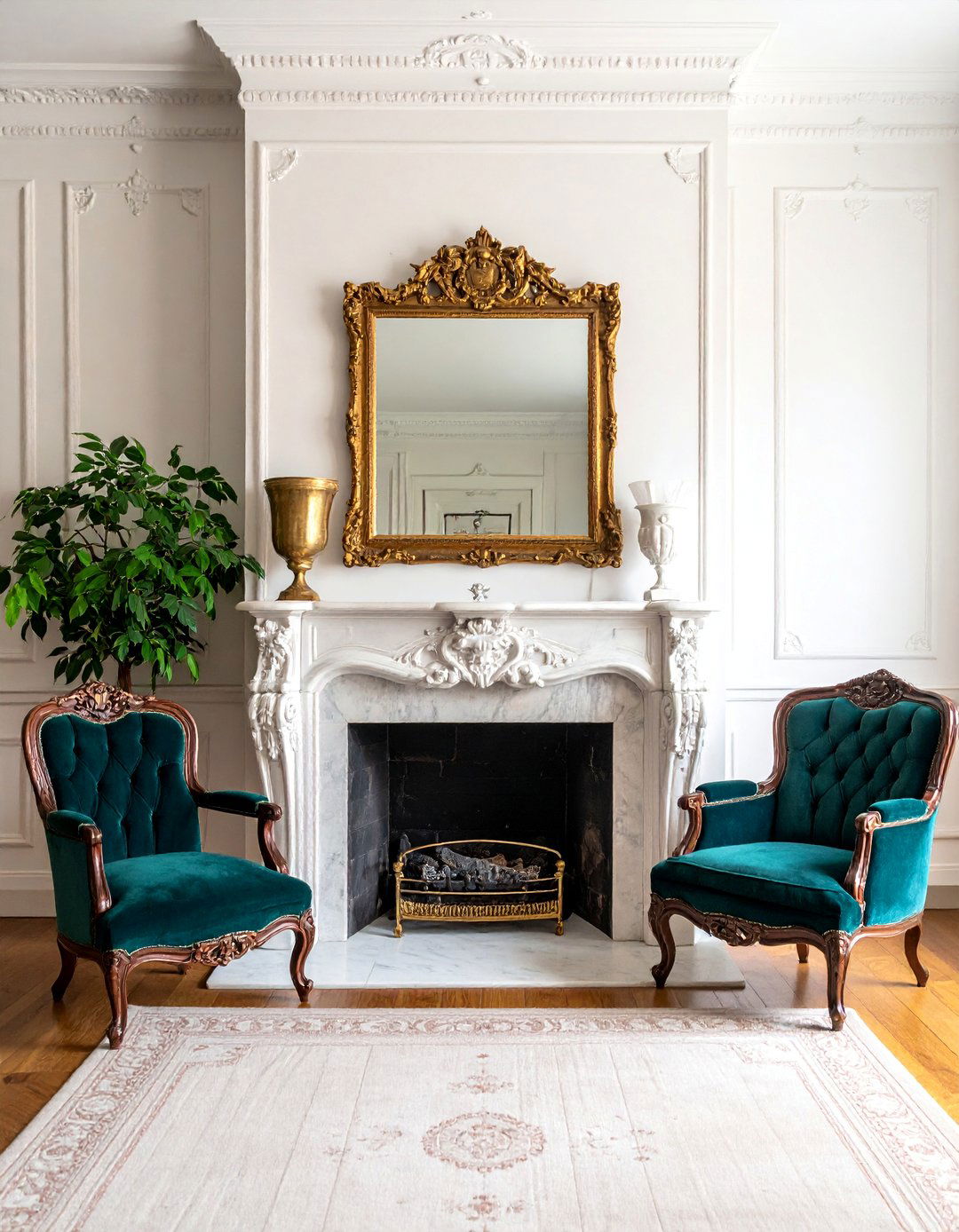
An ornate fireplace mantel serves as the undisputed heart of a Victorian living room. These are not merely functional structures but elaborate works of art, often crafted from carved dark woods like mahogany or walnut, or from polished marble in shades of white, black, or deep green. Featuring intricate details such as scrolling acanthus leaves, classical figures, and incised lines, the mantel becomes a commanding focal point. To enhance its prominence, position a large, gilt-framed mirror or a dramatic oil painting above it. Arrange antique fireplace tools and a decorative screen on the hearth to complete the authentic, cozy atmosphere.
2. Victorian Interior with Elaborate Ceiling Medallions
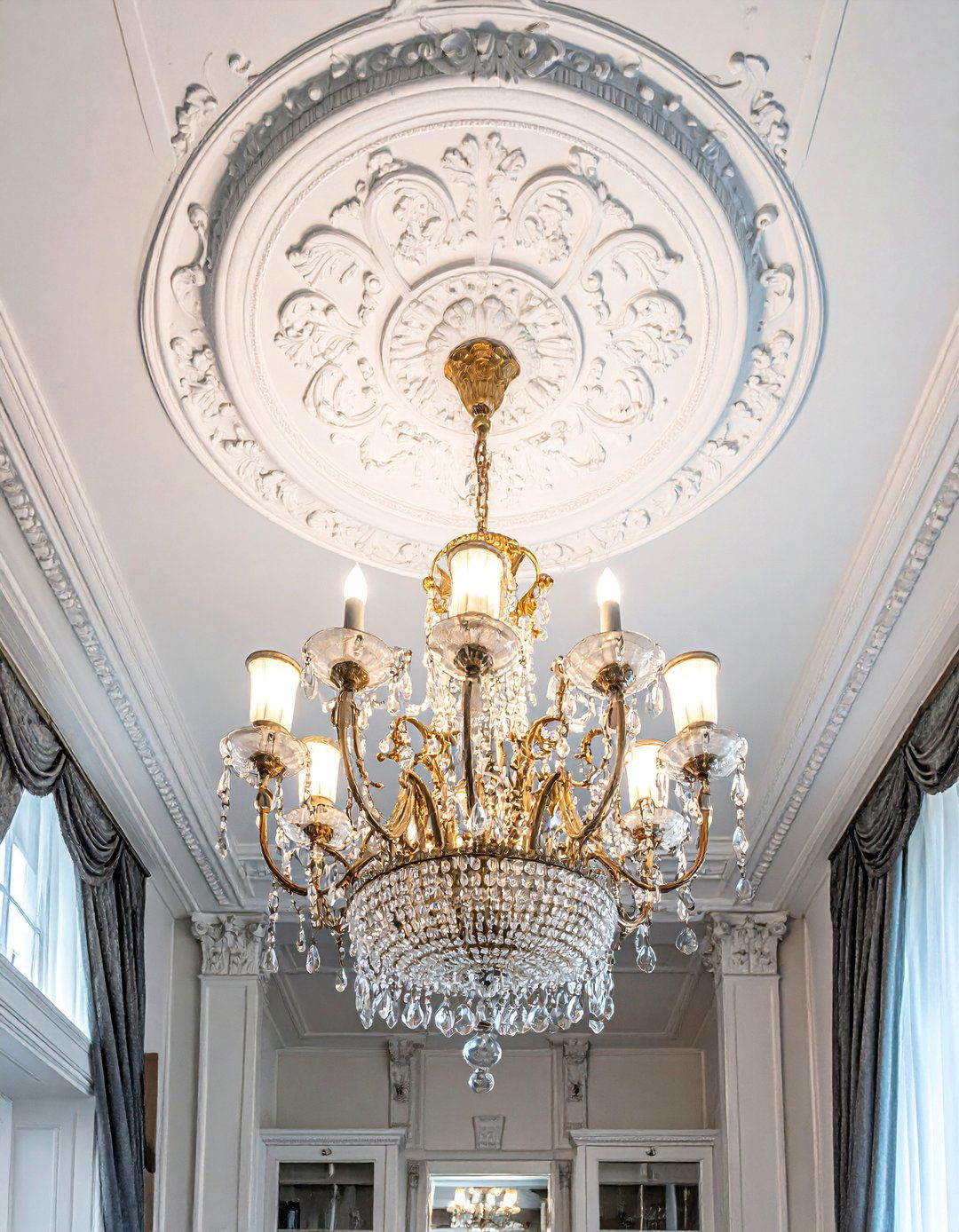
Drawing the eye upward, an elaborate ceiling medallion adds a layer of architectural grandeur that is quintessentially Victorian. These decorative plaster or polyurethane pieces are installed at the center of the ceiling, serving as an ornate base for a chandelier. Designs range from intricate floral and foliate patterns to more geometric or classical motifs. In rooms with high ceilings, a large and deeply detailed medallion makes a powerful statement, emphasizing the room’s verticality and providing a sense of historical authenticity. Painting the medallion in a contrasting color or highlighting its details with gold leaf can further accentuate its sophisticated beauty.
3. Victorian Interior with Stained Glass Windows
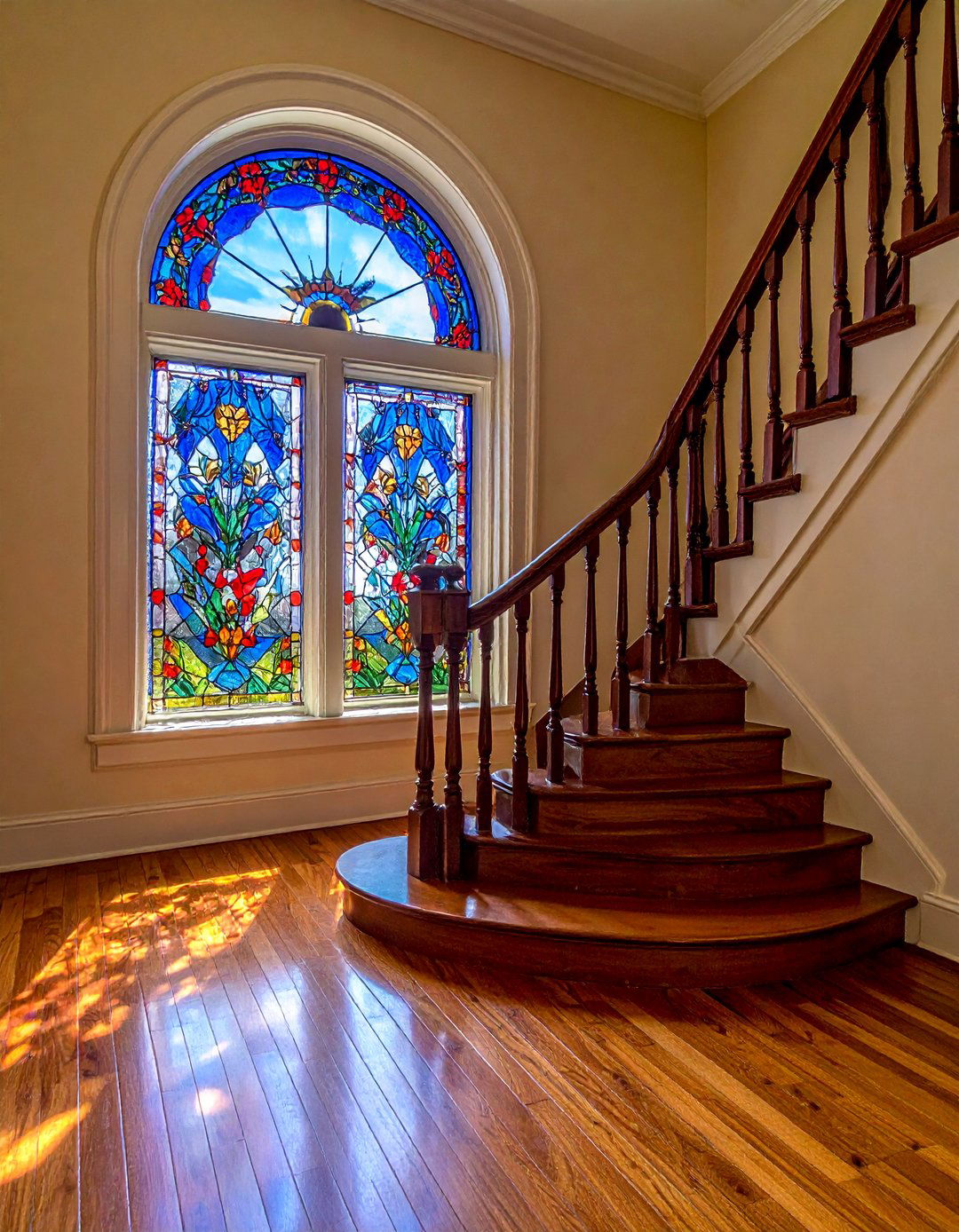
Stained glass windows introduce a magical quality to a Victorian interior, filtering daylight through a mosaic of vibrant colors and intricate patterns. Often found in entryways, stairwell landings, and formal living spaces, these windows were a symbol of status and artistic taste. Common motifs include geometric designs, flowing floral patterns, birds, and heraldic crests. Installing a stained glass panel, even in a modern home, can evoke this historical charm. It not only provides privacy without blocking light but also acts as a dynamic piece of art that transforms the room’s ambiance as the sun moves across the sky throughout the day.
4. Victorian Interior with Dark, Polished Wood Flooring
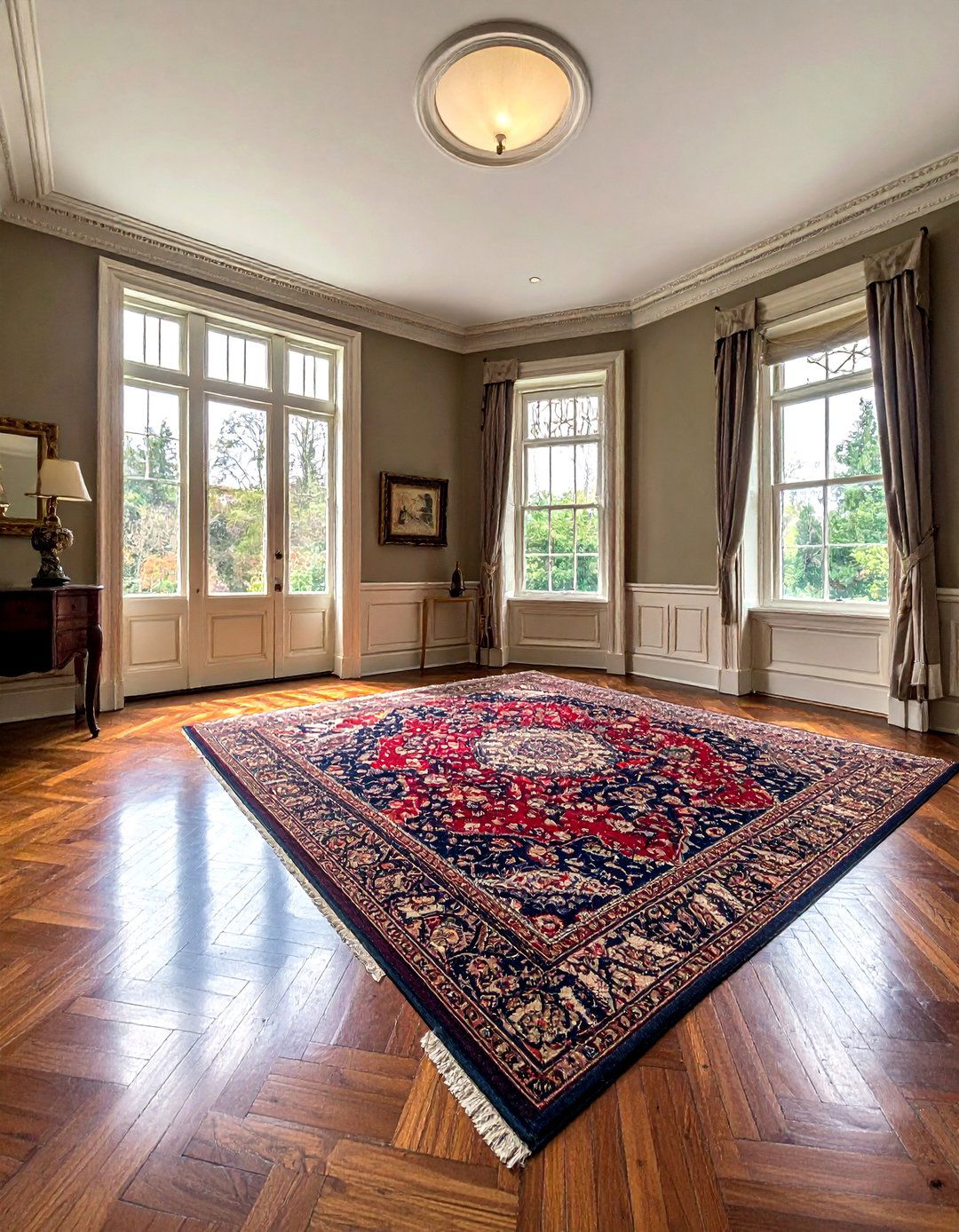
The foundation of a classic Victorian room often begins with dark, polished wood flooring. Rich materials like mahogany, oak, and walnut were highly favored, laid in intricate patterns that added another layer of decoration to the space. Parquet flooring, particularly in herringbone or chevron designs, was exceptionally popular and created a sense of movement and sophistication. To achieve this look, opt for hardwood planks with a dark stain and a high-gloss finish that reflects light beautifully. This dark, luxurious base provides the perfect contrast for ornate furniture and richly colored Oriental rugs, grounding the room in timeless elegance.
5. Victorian Interior with Intricate Crown Molding
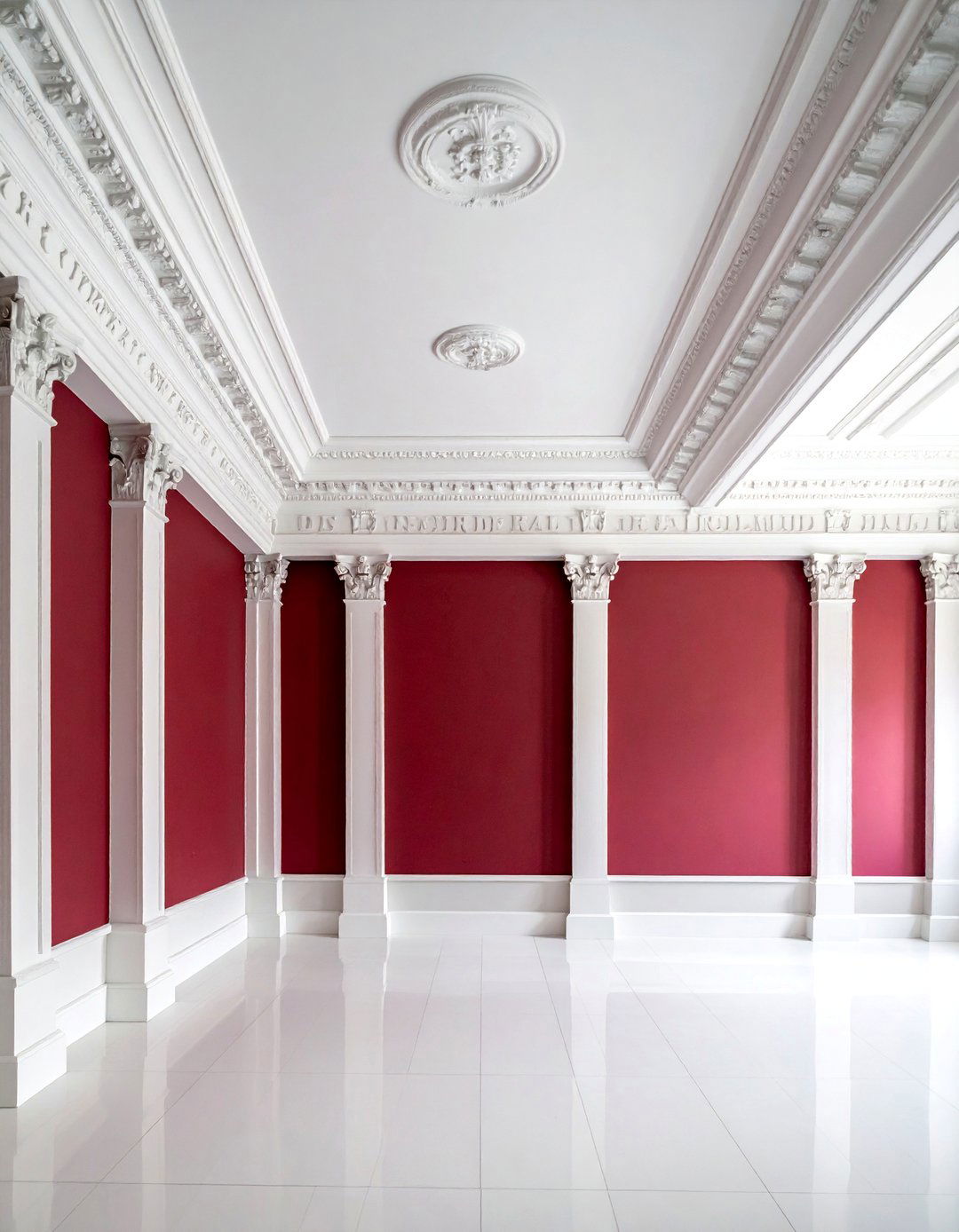
Intricate crown molding is a defining architectural element that bridges the walls and ceiling with decorative flair. In Victorian homes, these were not simple strips of wood but complex, built-up profiles featuring multiple layers of trim, including dentil, egg-and-dart, and acanthus leaf motifs. This detailing adds depth, shadow, and a sense of formal structure to any room, elevating it from ordinary to grand. For an authentic feel, use wide, multi-layered molding that complements the height of the ceiling. Painting it in a crisp white or a complementary shade to the walls helps it stand out as a key feature.
6. Victorian Interior with Rich Velvet Upholstery
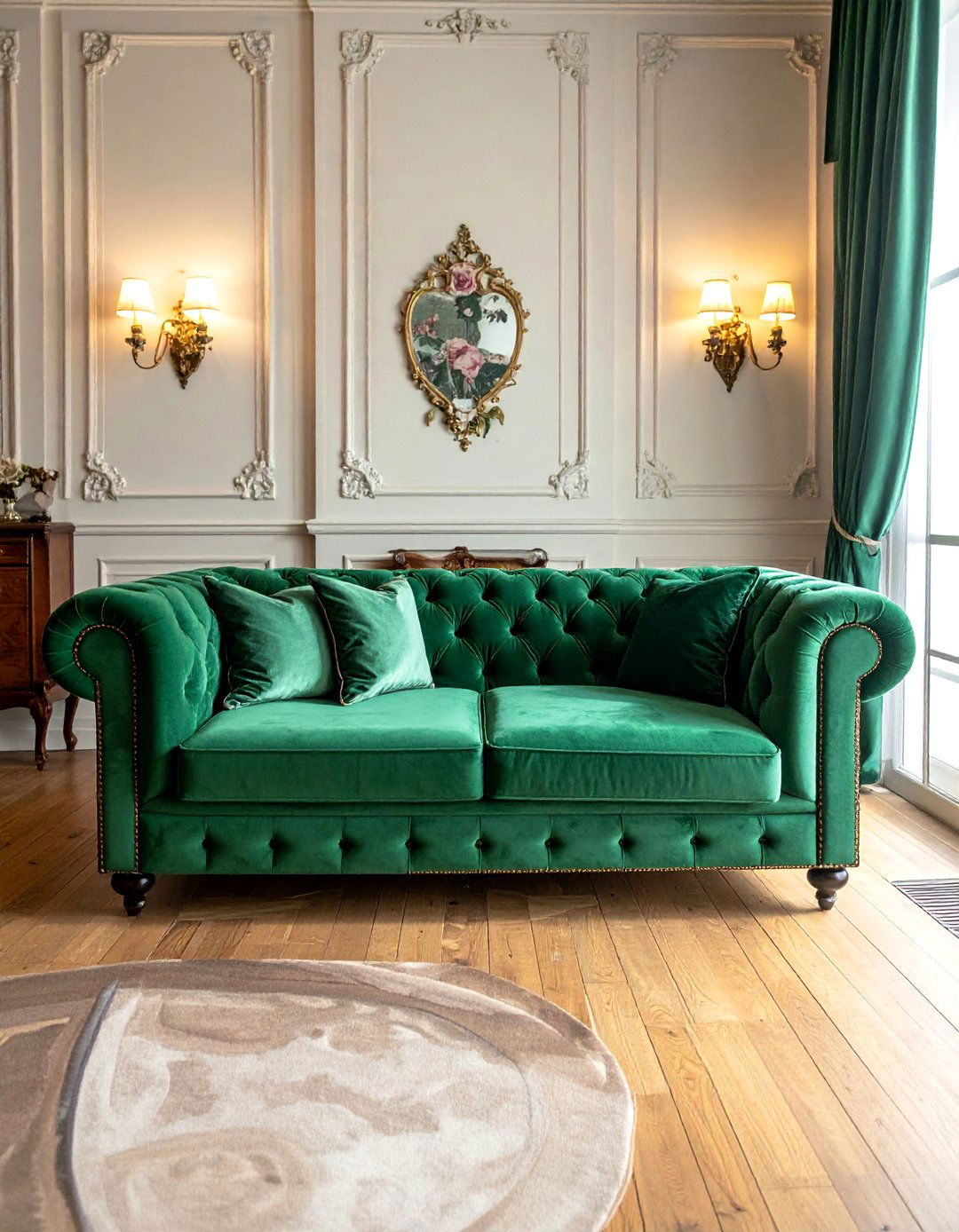
To capture the luxurious comfort of the Victorian era, incorporate rich velvet upholstery on key furniture pieces. This plush, tactile fabric was a favorite for its deep color saturation and elegant sheen, appearing on everything from sofas and armchairs to dining chairs and chaise lounges. Opt for jewel tones like emerald green, sapphire blue, ruby red, or deep amethyst to create a dramatic and inviting atmosphere. A tufted velvet chesterfield sofa or a pair of high-backed armchairs can serve as a stunning focal point, offering both visual appeal and a comfortable place to relax amidst the room’s ornate surroundings.
7. Victorian Interior with Damask and Floral Wallpaper
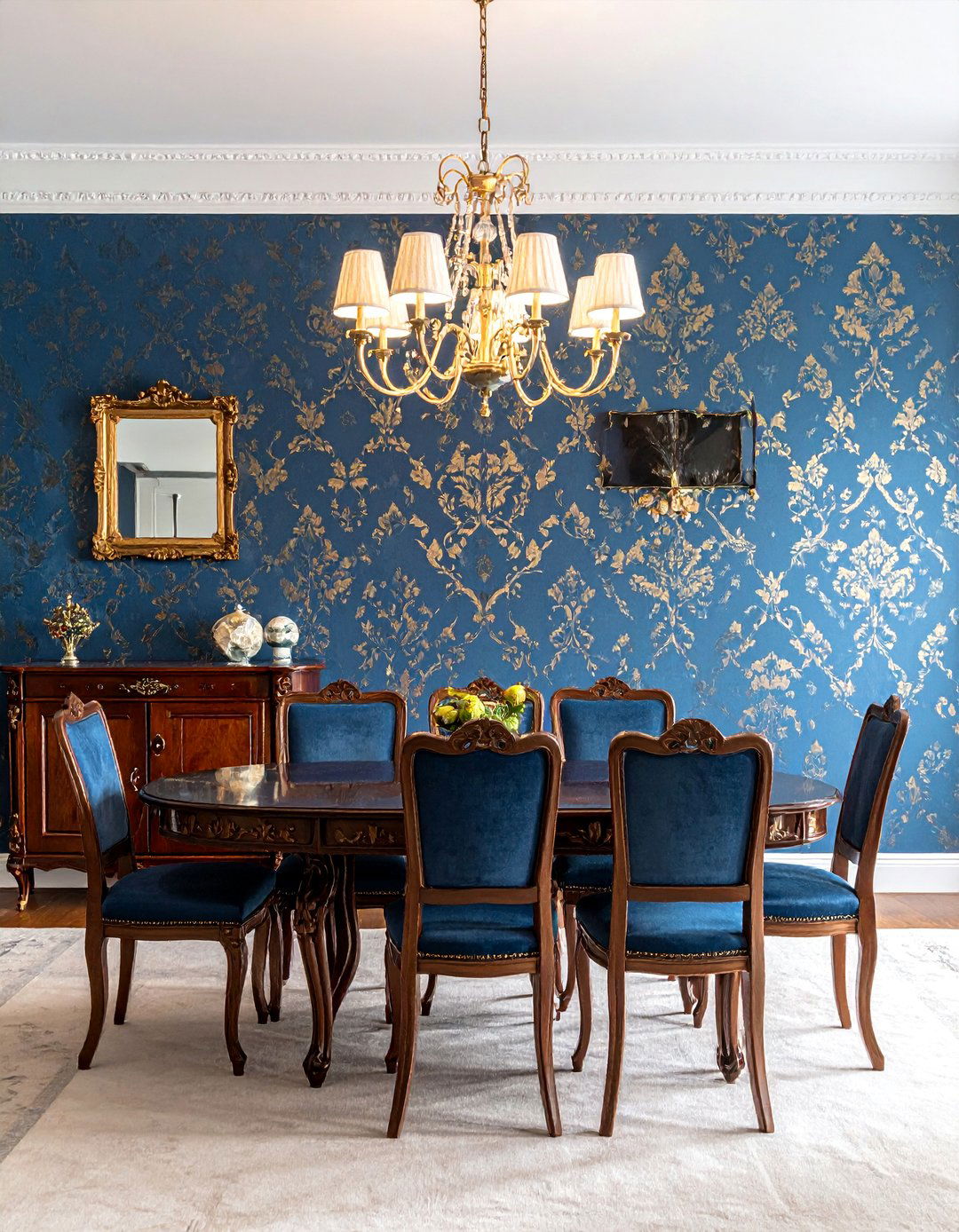
Wallpaper was essential in Victorian interiors, used to add pattern, color, and texture to walls in nearly every room. Damask and floral prints were among the most popular choices, reflecting the era's fascination with both historical patterns and the natural world. Damask wallpaper, with its formal, tone-on-tone woven pattern, lends a sense of stately elegance to a dining room or parlor. Meanwhile, large-scale floral prints, featuring lush roses, lilies, and ferns against dark backgrounds, create a romantic and slightly moody ambiance. Using these wallpapers, even on a single accent wall, instantly infuses a space with authentic historical character.
8. Victorian Interior with Four-Poster Canopy Beds
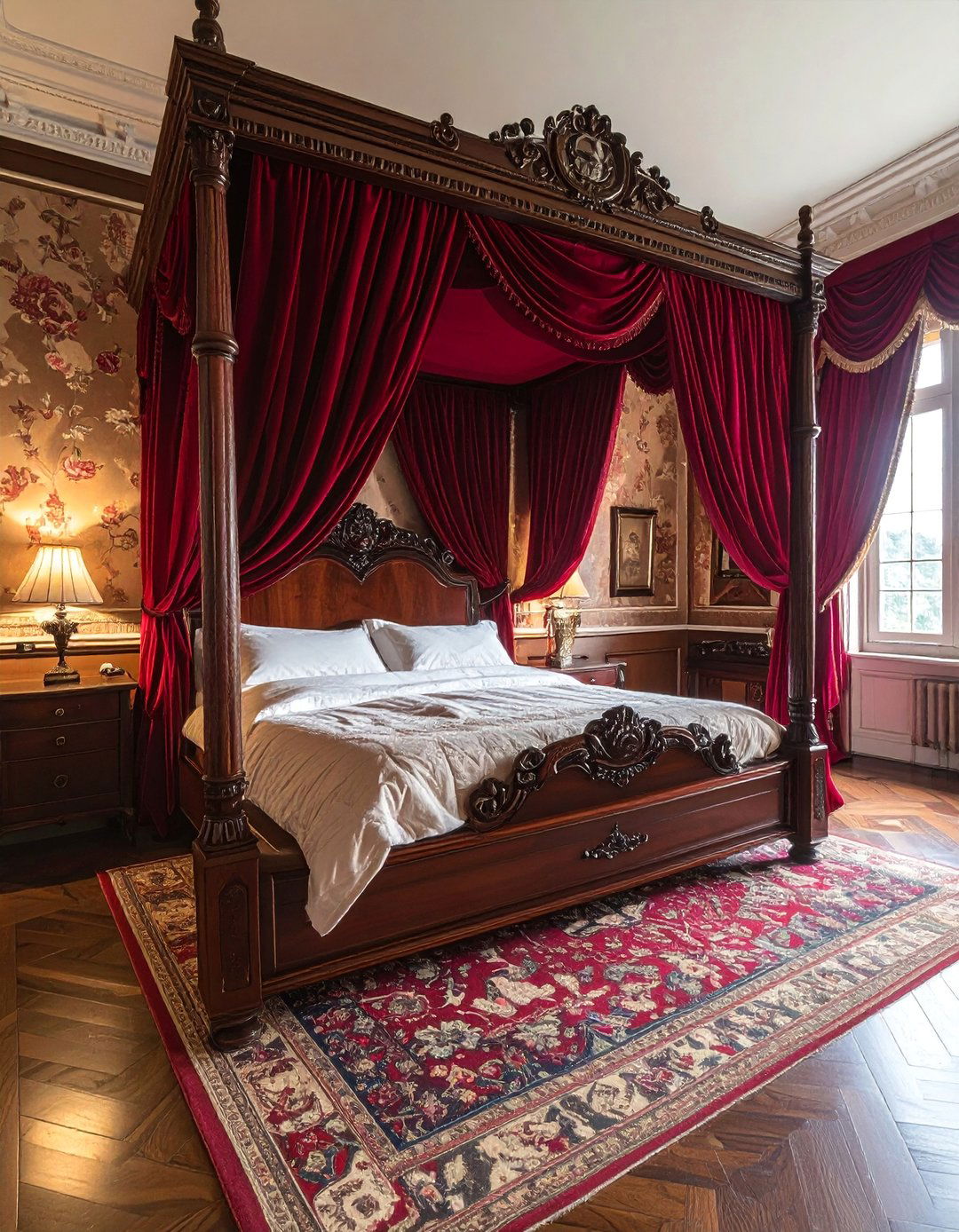
The four-poster canopy bed stands as the majestic centerpiece of a Victorian-inspired bedroom. These substantial beds, often crafted from dark, elaborately carved wood like mahogany or walnut, create a powerful statement of drama and romance. The high posts can be left bare to emphasize their sculptural quality or draped with heavy fabrics such as velvet, silk, or brocade to create a cozy, enclosed sanctuary. This not only adds a layer of texture and opulence but also harks back to the practical purpose of curtains for warmth and privacy, making the bed a true room-within-a-room and an undeniable focal point.
9. Victorian Interior with a Clawfoot Bathtub
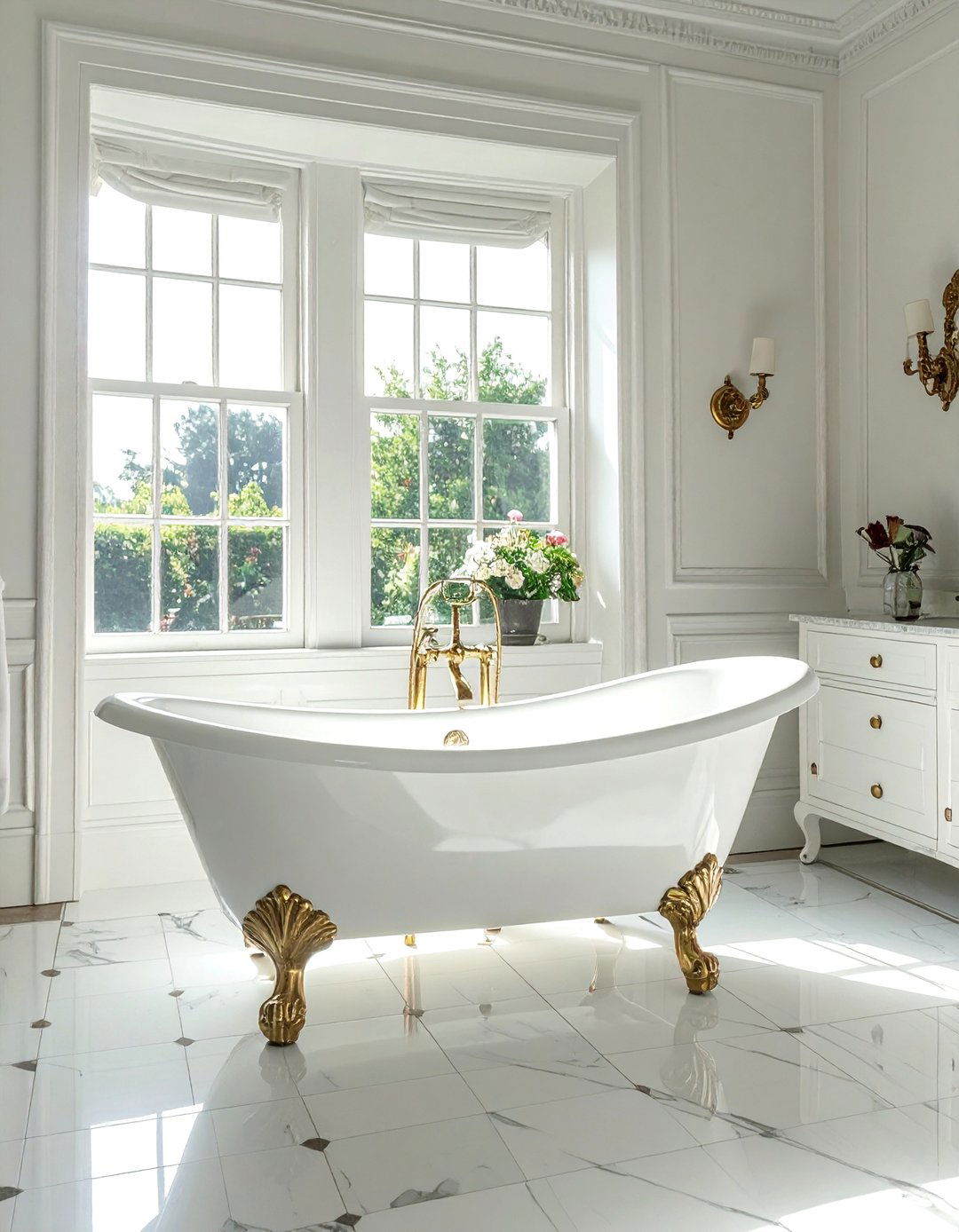
No Victorian-style bathroom is complete without an elegant clawfoot bathtub. This freestanding tub, characterized by its distinctive feet shaped like animal claws, serves as a luxurious sculptural element. Typically made of cast iron with a porcelain interior, these tubs retain heat exceptionally well, promising a long, relaxing soak. Position the tub in the center of the room or beneath a window to make it a clear focal point. Pair it with vintage-style floor-mounted fixtures in finishes like polished brass or nickel to complete the look, transforming an ordinary bathroom into a sophisticated and tranquil retreat from the modern world.
10. Victorian Interior with Dramatic Crystal Chandeliers
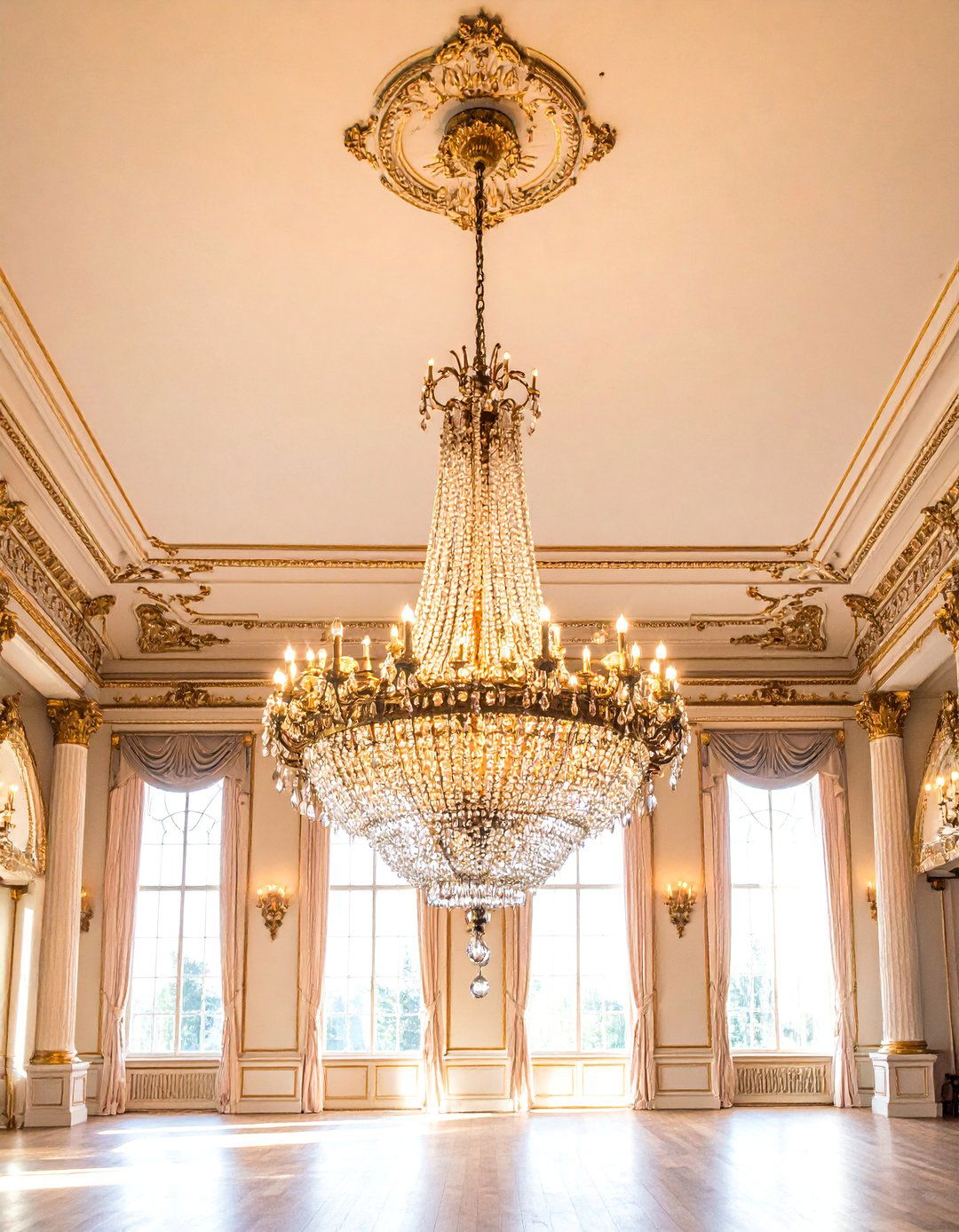
Lighting in a Victorian interior was meant to be as decorative as it was functional, and nothing embodies this principle better than a dramatic crystal chandelier. Suspended from a ceiling medallion in a formal living room, dining room, or grand entryway, a chandelier adds sparkle and grandeur. The cascading crystals refract light, casting intricate patterns across the room and creating an enchanting ambiance, especially in the evening. Look for fixtures with multiple tiers, ornate brass or bronze arms, and an abundance of cut-glass prisms to achieve an authentic, opulent effect that elevates the entire space and serves as a dazzling centerpiece.
11. Victorian Interior with Gothic Revival Elements
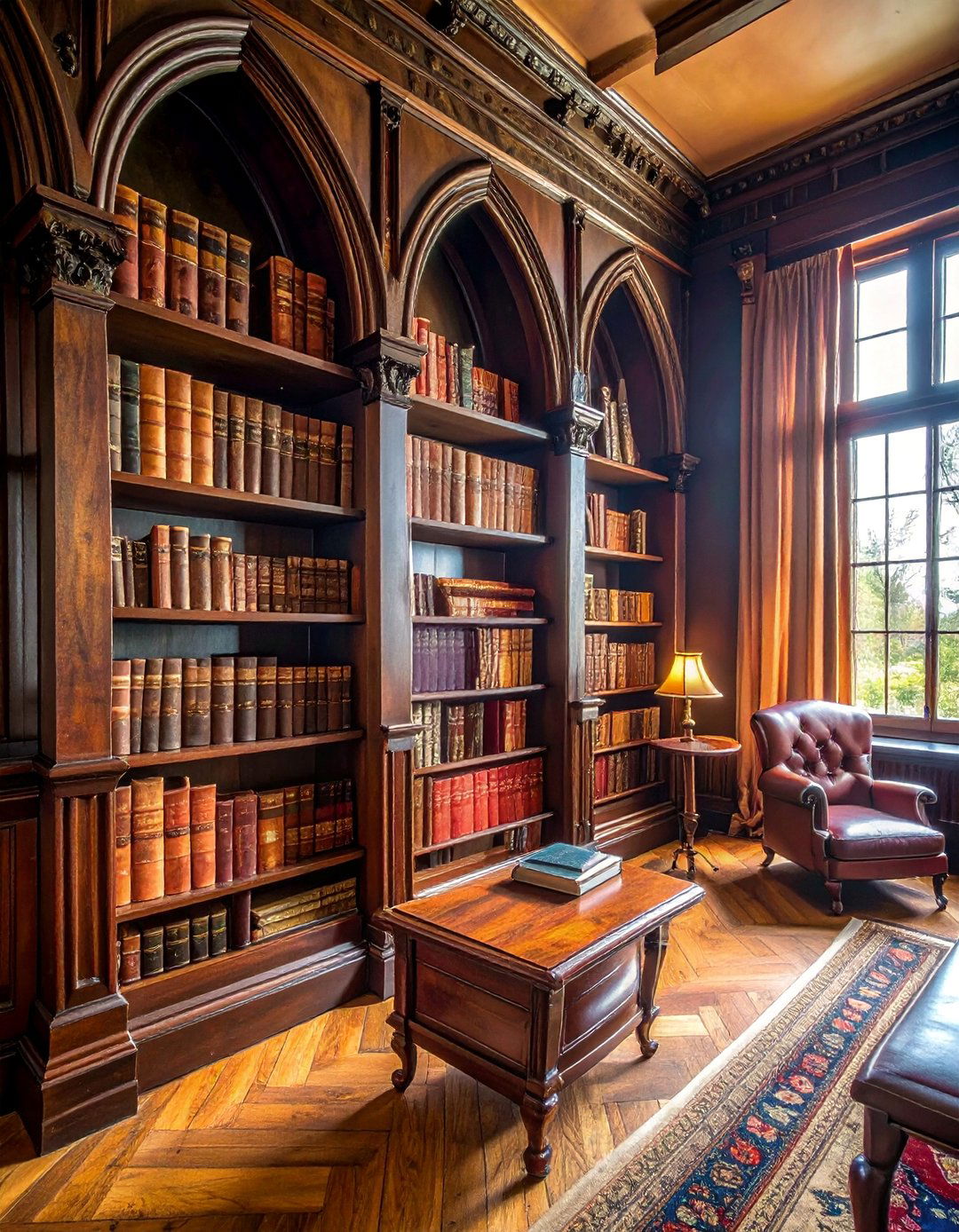
The Victorian era saw a resurgence of interest in medieval design, leading to the popularity of Gothic Revival elements in interior architecture and furniture. This style is characterized by features such as pointed arches, quatrefoils (a four-lobed pattern), and intricate tracery reminiscent of cathedral windows. Incorporate this dramatic aesthetic through a bookcase with pointed-arch tops, a side chair with a carved back resembling window tracery, or even a wallpaper pattern featuring Gothic motifs. These elements add a sense of history, mystery, and architectural gravitas, infusing the space with a distinctively romantic and slightly somber mood that contrasts beautifully with other ornate details.
12. Victorian Interior with Bay Window Reading Nooks
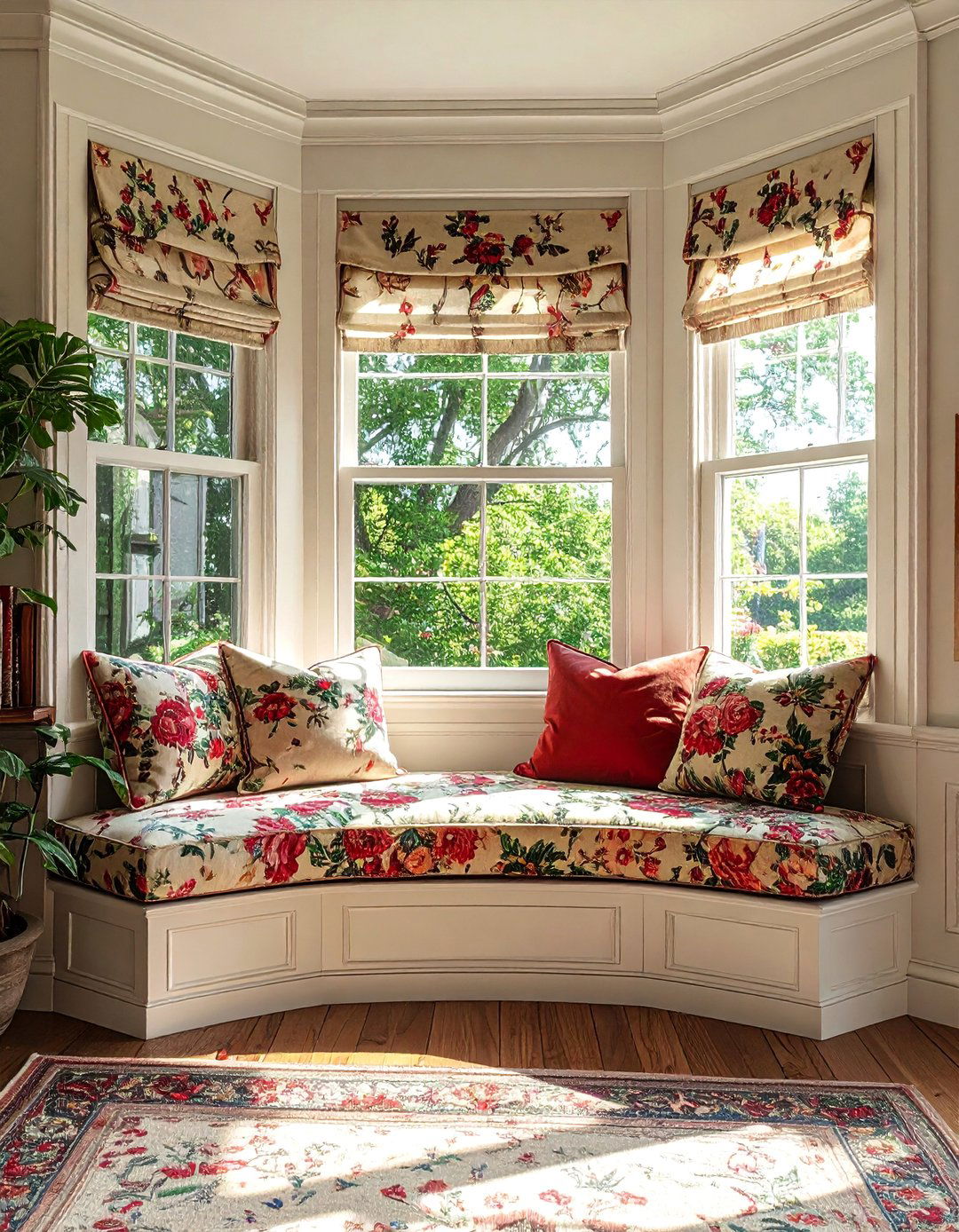
Bay windows are a classic feature of Victorian architecture, designed to bring more natural light into a room and create an interesting structural feature. This alcove is the perfect spot to establish a cozy and elegant reading nook. Install a built-in window seat with a plush, upholstered cushion in a rich fabric like velvet or a classic floral print. Add an abundance of throw pillows for comfort and a small side table for a cup of tea and a book. Flanked by heavy, floor-length drapery that can be drawn for privacy, this charming nook becomes a functional and beautiful retreat within a larger room.
13. Victorian Interior with Wainscoting and Wall Paneling
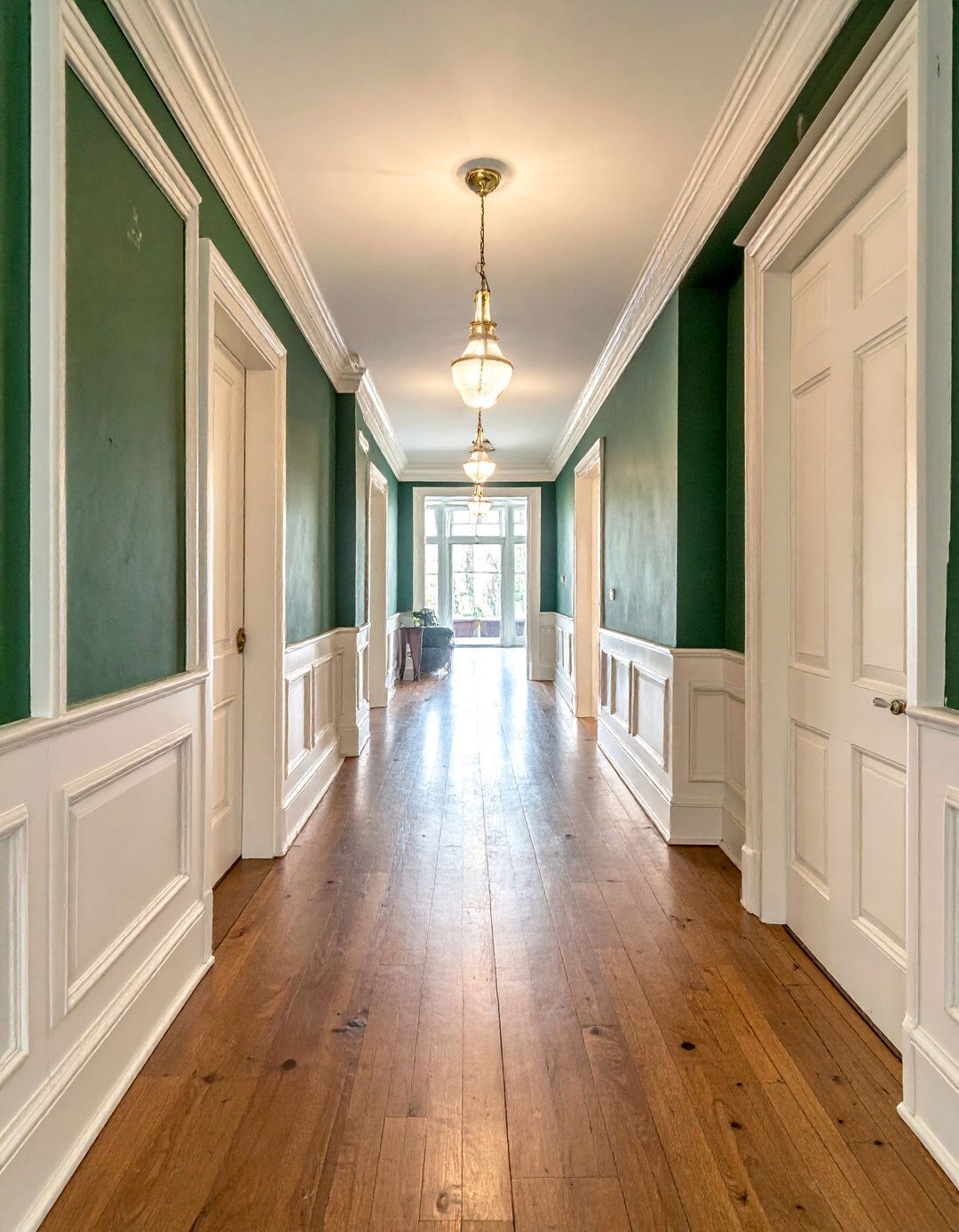
Wainscoting and wall paneling are excellent ways to introduce architectural structure and formality to a Victorian interior. Traditionally, wainscoting consists of wooden panels that cover the lower portion of a wall, typically rising to chair-rail height. Styles range from simple beadboard to more formal raised panels. This treatment not only protects walls but also adds a layer of texture and classic detail. Painting the wainscoting in a crisp white or a color that contrasts with the wallpaper or paint above it creates a sharp, sophisticated look. This element is particularly effective in hallways, dining rooms, and libraries for an authentic period feel.
14. Victorian Interior with a Maximalist Gallery Wall
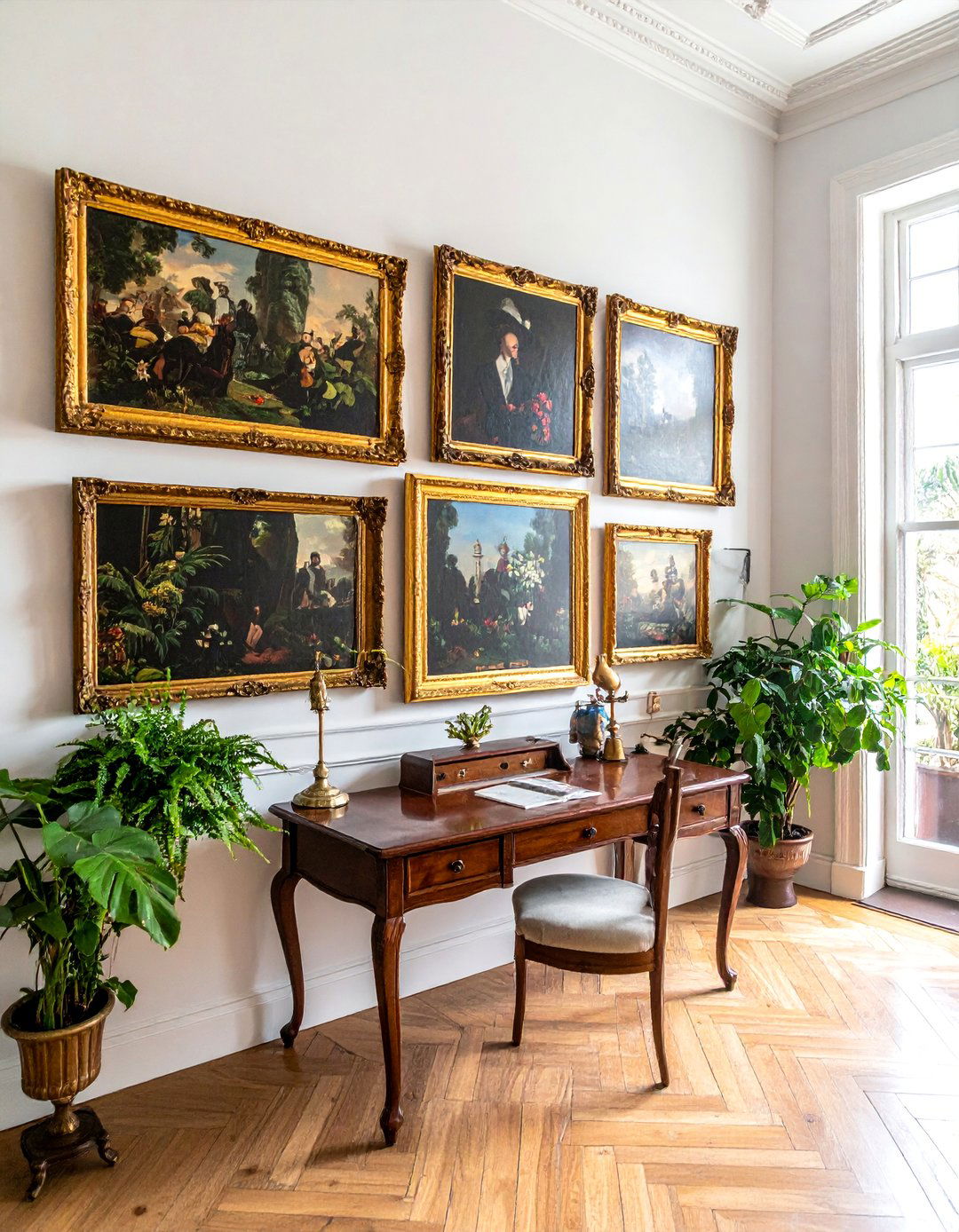
Embrace the Victorian penchant for collecting and display by creating a maximalist gallery wall. This is not a minimalist, orderly arrangement but a dense, floor-to-ceiling collection of art and objects. Mix and match oil paintings, botanical prints, silhouettes, and daguerreotypes in a variety of ornate, mismatched frames in gold, black, and dark wood finishes. The key is to pack the frames closely together, creating a rich visual tapestry that tells a story. This approach turns a blank wall into a deeply personal and visually captivating feature that celebrates the "more is more" philosophy of the era, making the space feel curated and lived-in.
15. Victorian Interior with Decorative Floor Tiles
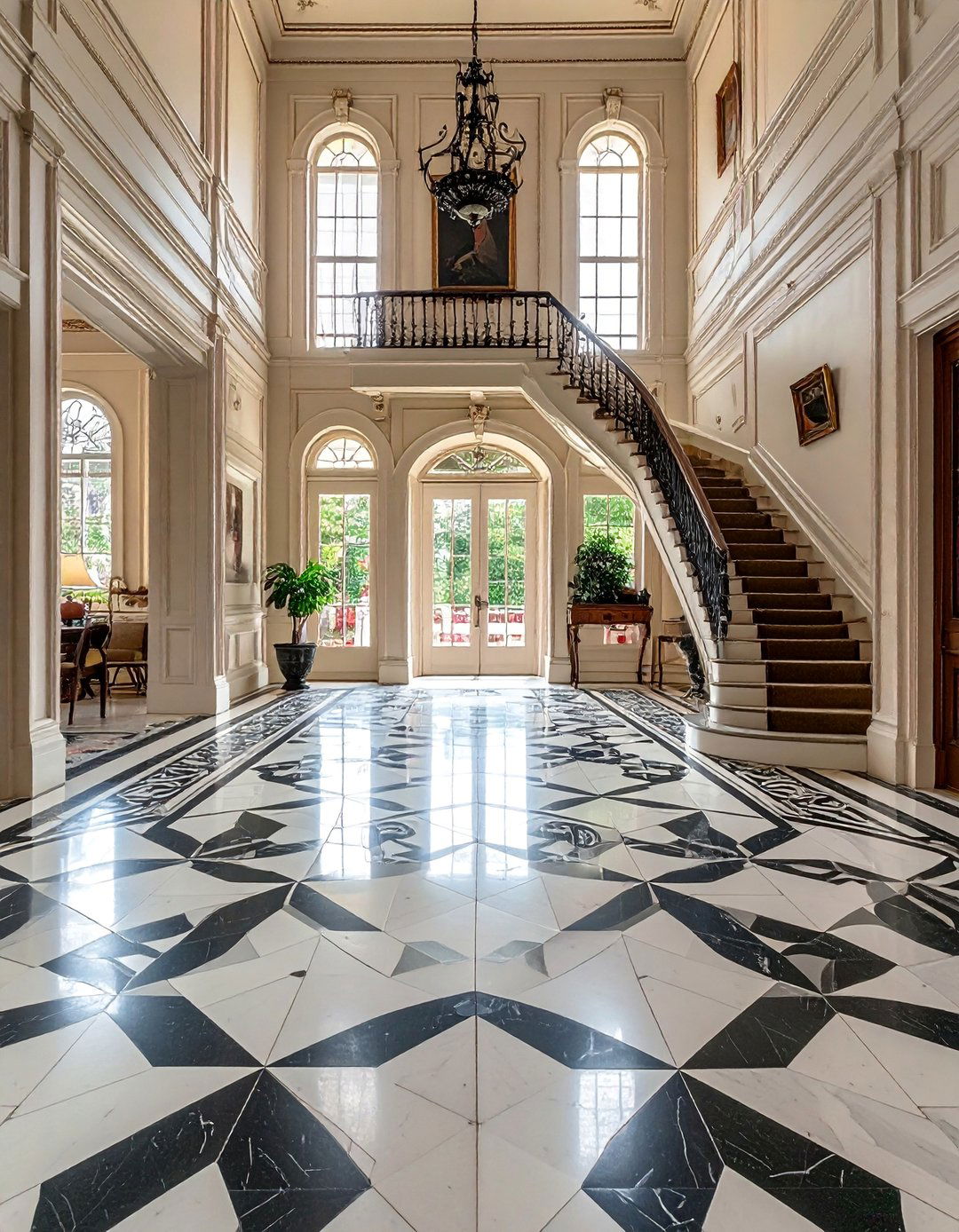
Decorative encaustic tiles were a hallmark of Victorian design, especially in high-traffic areas like entryways, hallways, and bathrooms. These ceramic tiles feature intricate geometric or floral patterns where the design is not just on the surface but runs through the entire thickness of the tile. This made them incredibly durable and vibrant. Replicating this look with modern porcelain or ceramic tiles can instantly add historical character and visual interest to a space. A black-and-white checkerboard pattern is a classic choice for a timeless look, while more complex, multi-colored geometric designs create a bold and welcoming statement right from the threshold.
16. Victorian Interior with Heavy, Layered Drapery
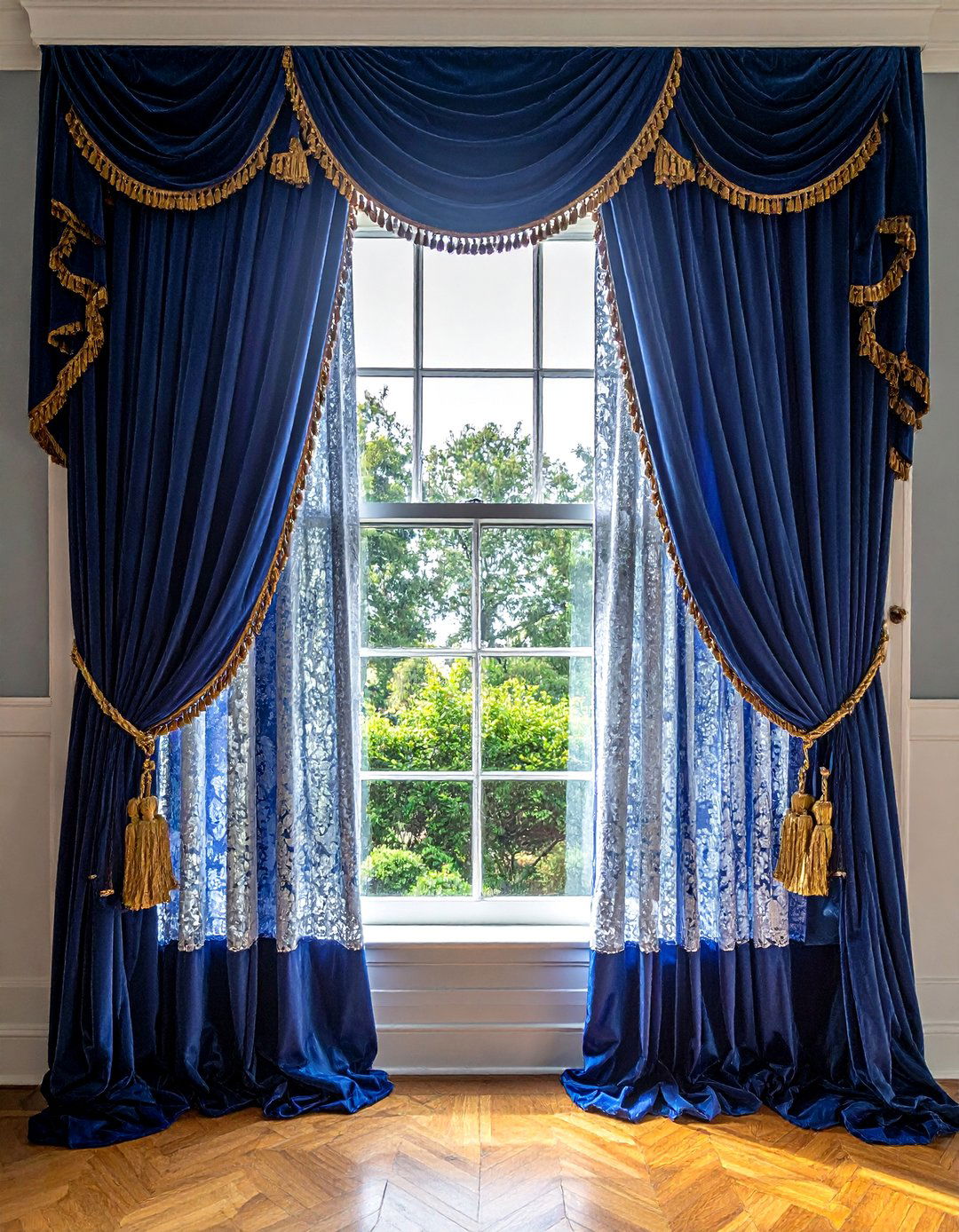
Windows in a Victorian home were elaborately dressed with heavy, layered drapery that conveyed a sense of opulence and privacy. This treatment often involved multiple components, starting with delicate lace or sheer panels against the glass, followed by thick, floor-length curtains made from luxurious fabrics like velvet, brocade, or silk damask. These were hung from ornate wooden or brass rods and often topped with a decorative valance or pelmet to hide the hardware. Finishing touches like heavy tassels, braided tiebacks, and thick fringe completed the sumptuous look, adding texture, color, and a sense of theatrical grandeur to the room.
17. Victorian Interior with a Cabinet of Curiosities
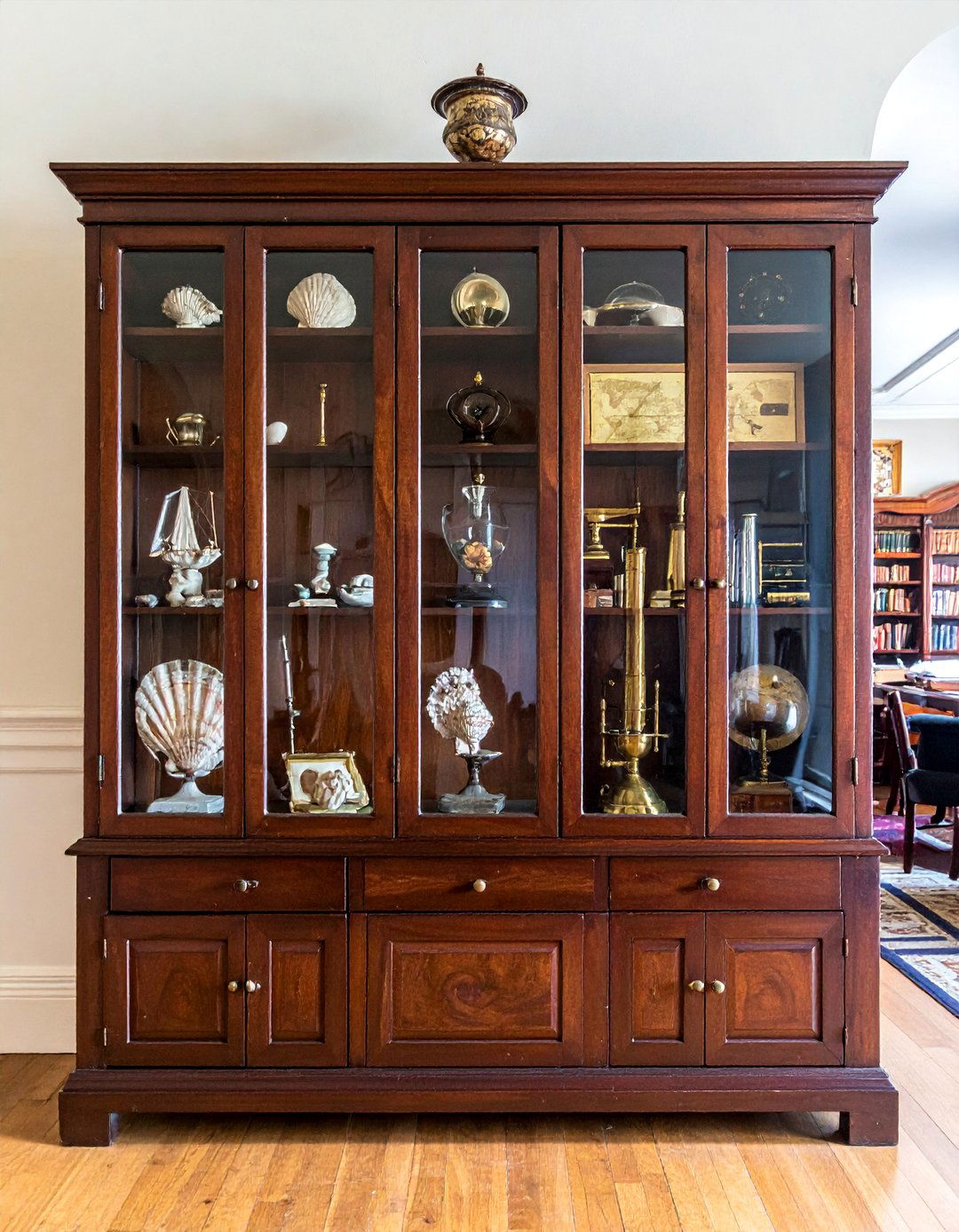
The Victorian era was a time of great exploration and scientific discovery, which led to a fascination with collecting exotic and unusual objects. A "cabinet of curiosities" was a dedicated piece of furniture or a small room used to display these treasures. Recreate this idea with a glass-fronted cabinet made of dark wood. Fill its shelves with an eclectic mix of items that pique your interest, such as seashells, minerals, antique scientific instruments, preserved insects, or small sculptures. This not only creates a unique and personal focal point but also serves as a fantastic conversation starter, reflecting the intellectual curiosity of the period.
18. Victorian Interior with Lush Botanical Prints
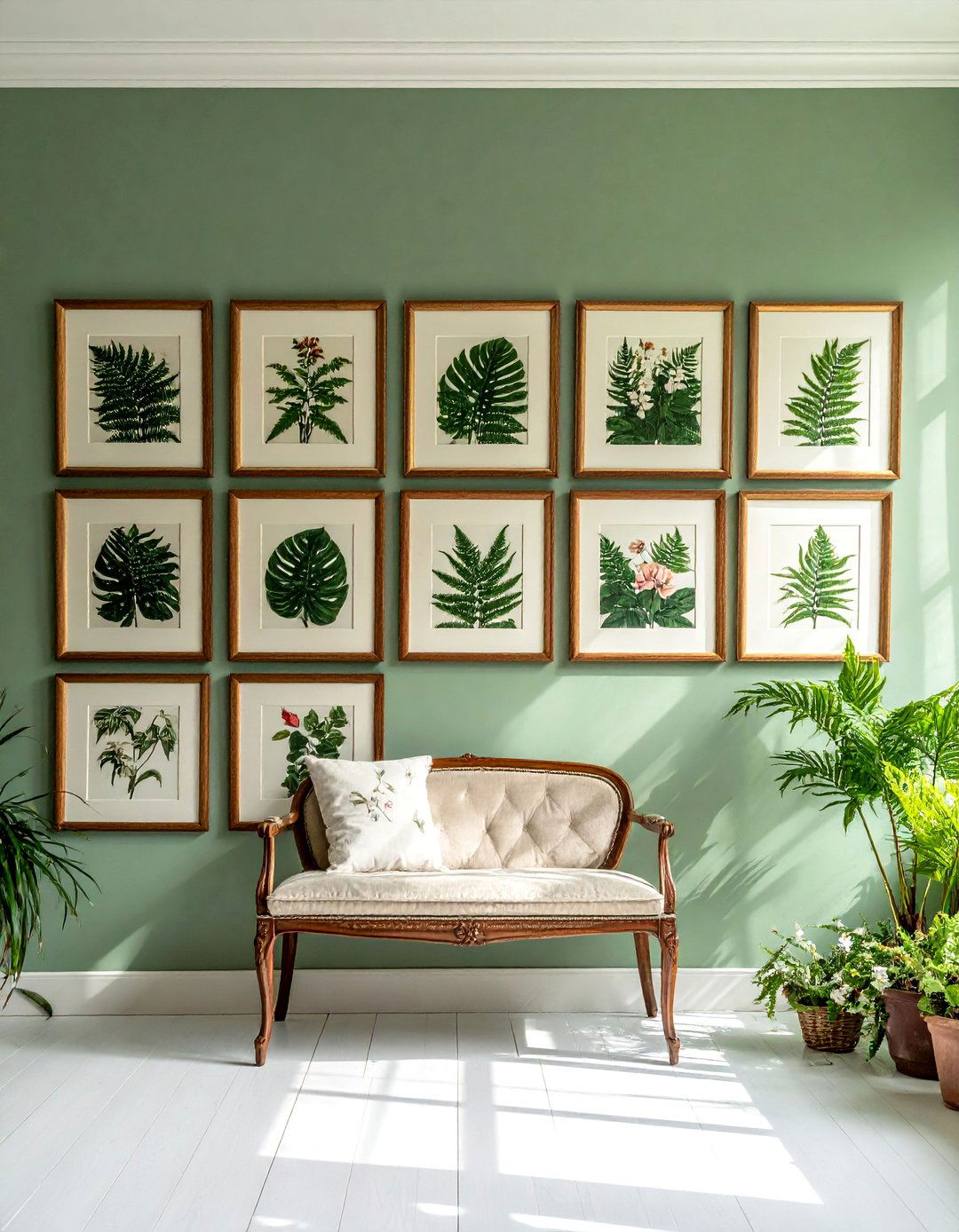
The Victorians had a deep love affair with botany, fueled by discoveries of new plant species from around the globe. This passion was reflected in their interior decor through the widespread use of botanical prints. Create a sophisticated arrangement by framing a series of detailed illustrations of ferns, flowers, or exotic plants. Hang them in a symmetrical grid in a study, hallway, or living room. The combination of scientific precision and natural beauty provides a calming and intellectual touch. Pair the artwork with live potted plants, especially ferns and palms in ornate planters, to bring the theme to life and add fresh vitality.
19. Victorian Interior with Antique Gold Gilt Mirrors
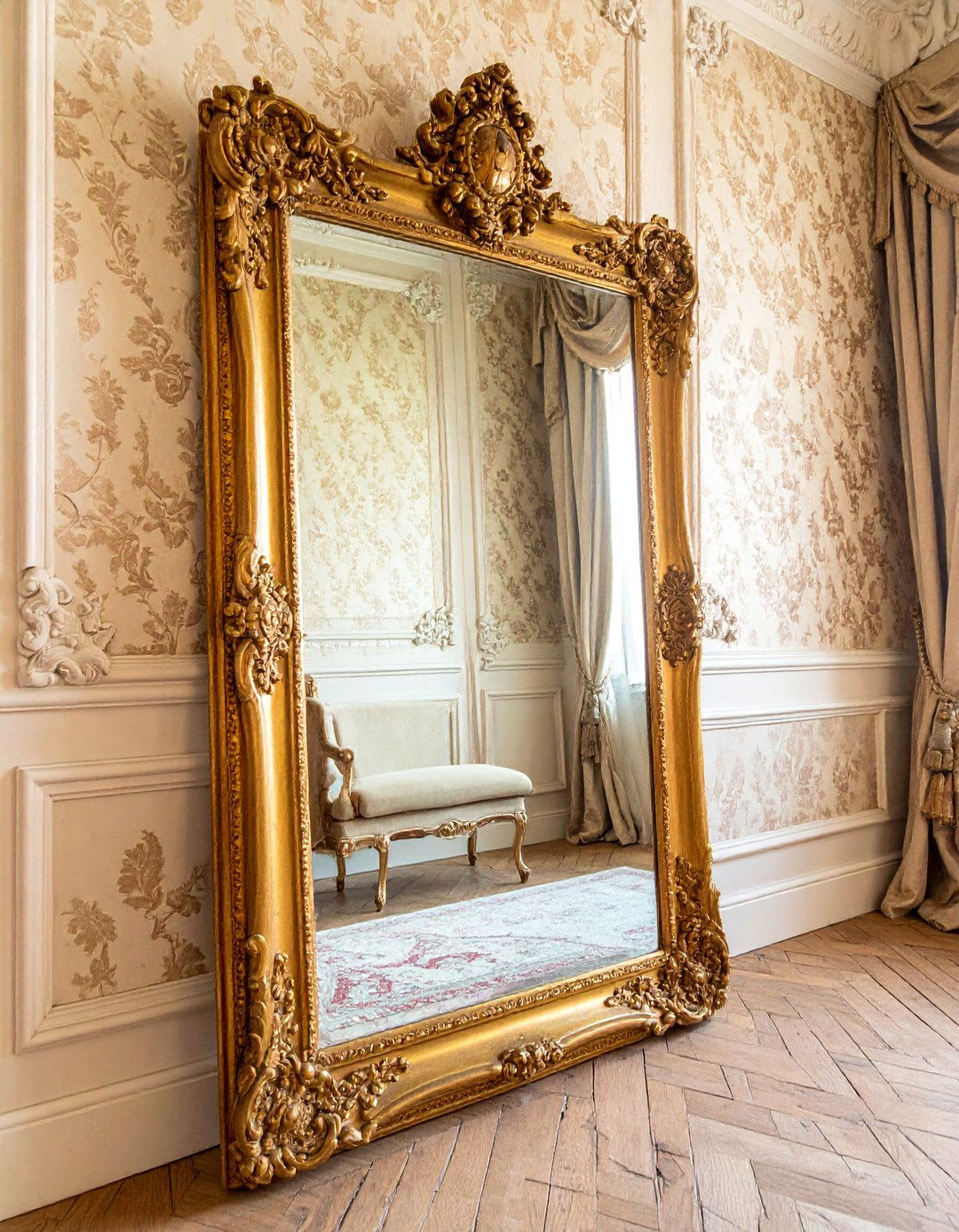
Large, ornate mirrors with antique gold gilt frames are a quintessential element of Victorian decor. These were used strategically to make rooms feel larger and brighter by reflecting both natural and artificial light, a crucial function in homes that were often dark by modern standards. Hang a massive, floor-to-ceiling mirror over a fireplace mantel or place one above a console table in an entryway to create a grand first impression. The intricate carvings and warm metallic finish of the frame add a layer of opulence and sophistication, acting as a piece of art in its own right while enhancing the room's overall sense of space and light.
20. Victorian Interior with a Formal Dining Room
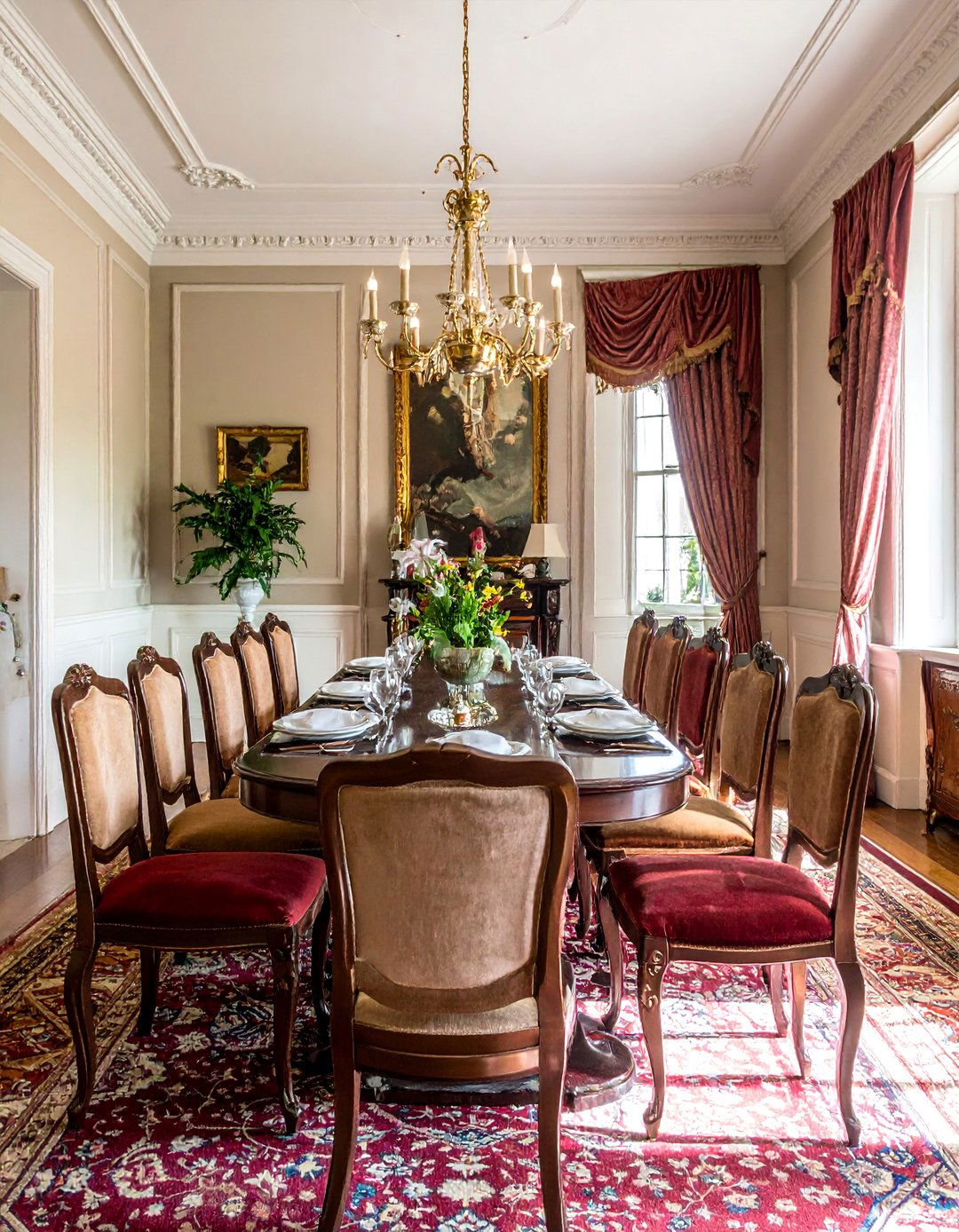
The formal dining room was a cornerstone of the Victorian home, designed to impress guests with its grandeur and adherence to social etiquette. The centerpiece was a large, heavy dining table made of dark, polished wood like mahogany, surrounded by a set of high-backed chairs with carved details and upholstered seats. A substantial sideboard or buffet would stand against one wall, used for both storage and displaying fine china and silverware. To complete the ambiance, hang a large chandelier above the table and dress the walls in a rich damask wallpaper, creating an elegant setting perfect for hosting memorable dinner parties.
21. Victorian Interior with a Moody Library
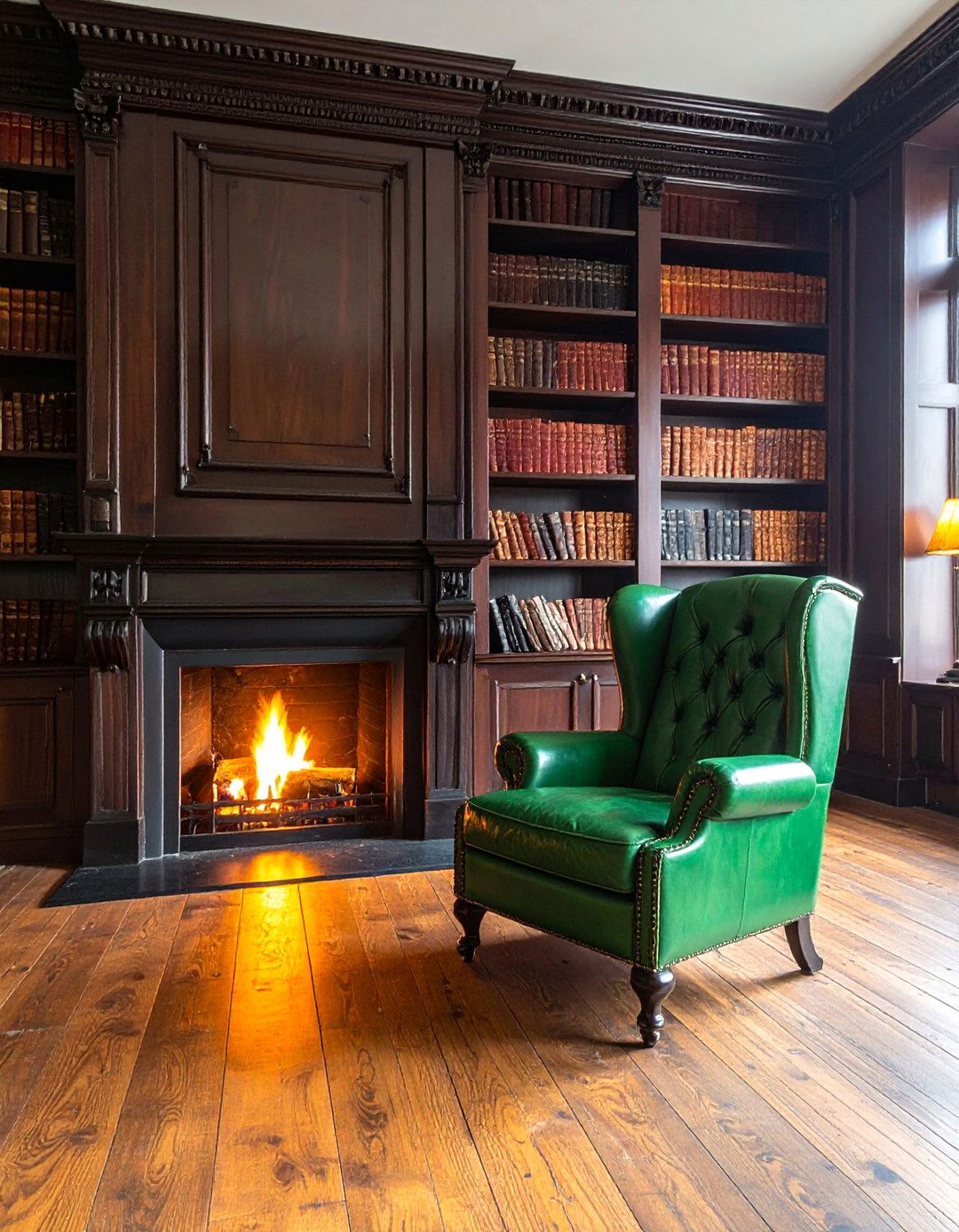
A moody, atmospheric library or study captures the scholarly and introspective side of the Victorian era. The key to this look is floor-to-ceiling built-in bookshelves crafted from dark wood, such as oak or walnut. Fill the shelves not just with books but with decorative objects and leather-bound volumes. Furnish the space with a comfortable leather chesterfield sofa or a wingback chair, perfect for reading by the fire. A heavy wooden desk, a banker's lamp, and a rich Persian rug underfoot complete the classic aesthetic. Use a dark color palette on the walls, like deep green or burgundy, to enhance the cozy, enveloping feel.
22. Victorian Interior with Tufted Settees and Lounges
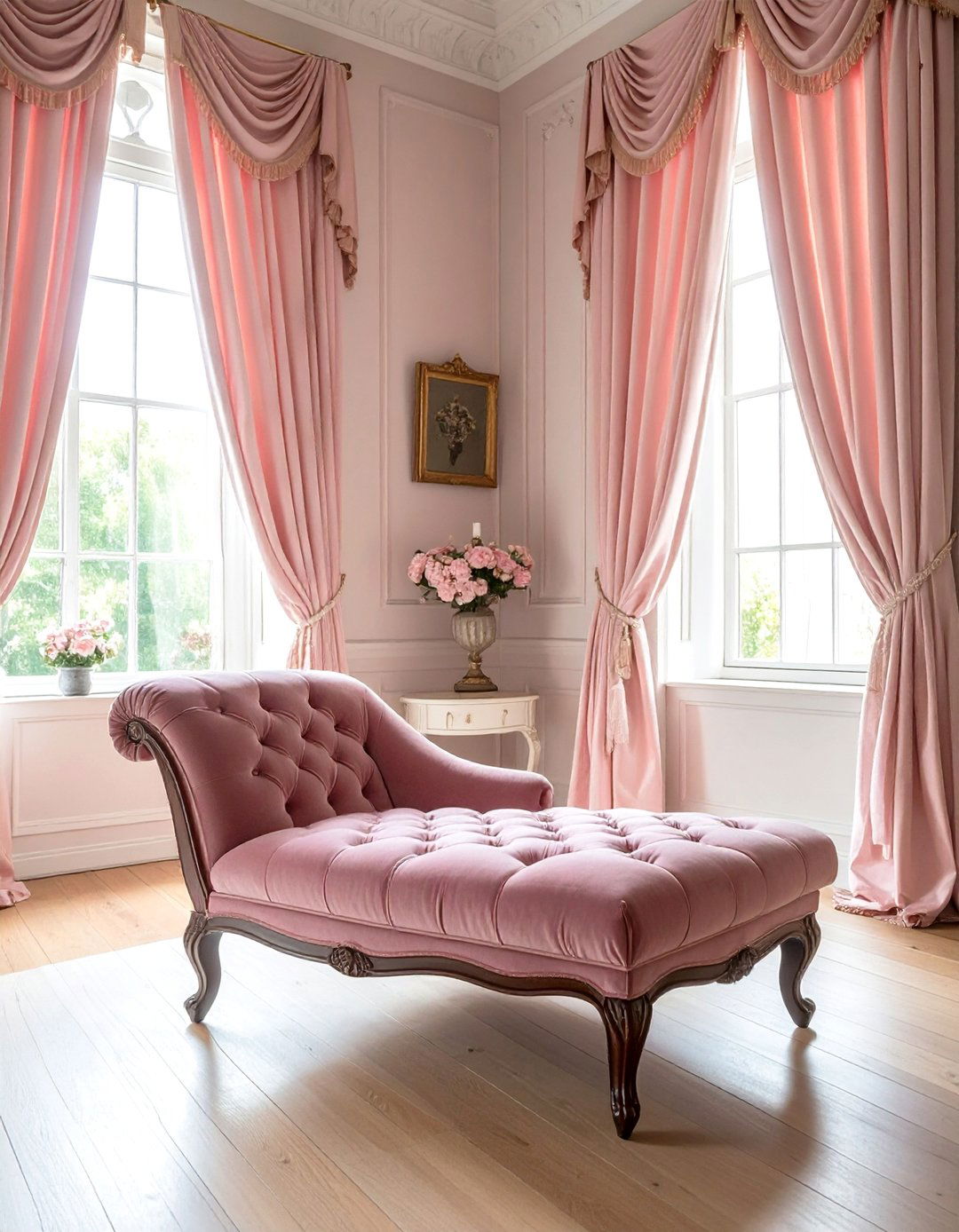
Elegant seating is paramount in a Victorian interior, and tufted settees and chaise lounges perfectly embody the era's blend of formality and comfort. The button-tufting technique, which creates deep, patterned indentations in the upholstery, adds a layer of texture and luxury. Choose a settee with curving lines, a carved wood frame, and plush velvet or silk upholstery. A chaise lounge, with its graceful, asymmetrical shape, provides a sophisticated spot for reclining and adds a touch of romanticism to a bedroom or a formal parlor. These pieces serve as beautiful sculptural elements that invite conversation and relaxation in a refined setting.
23. Victorian Interior with Oriental Rugs
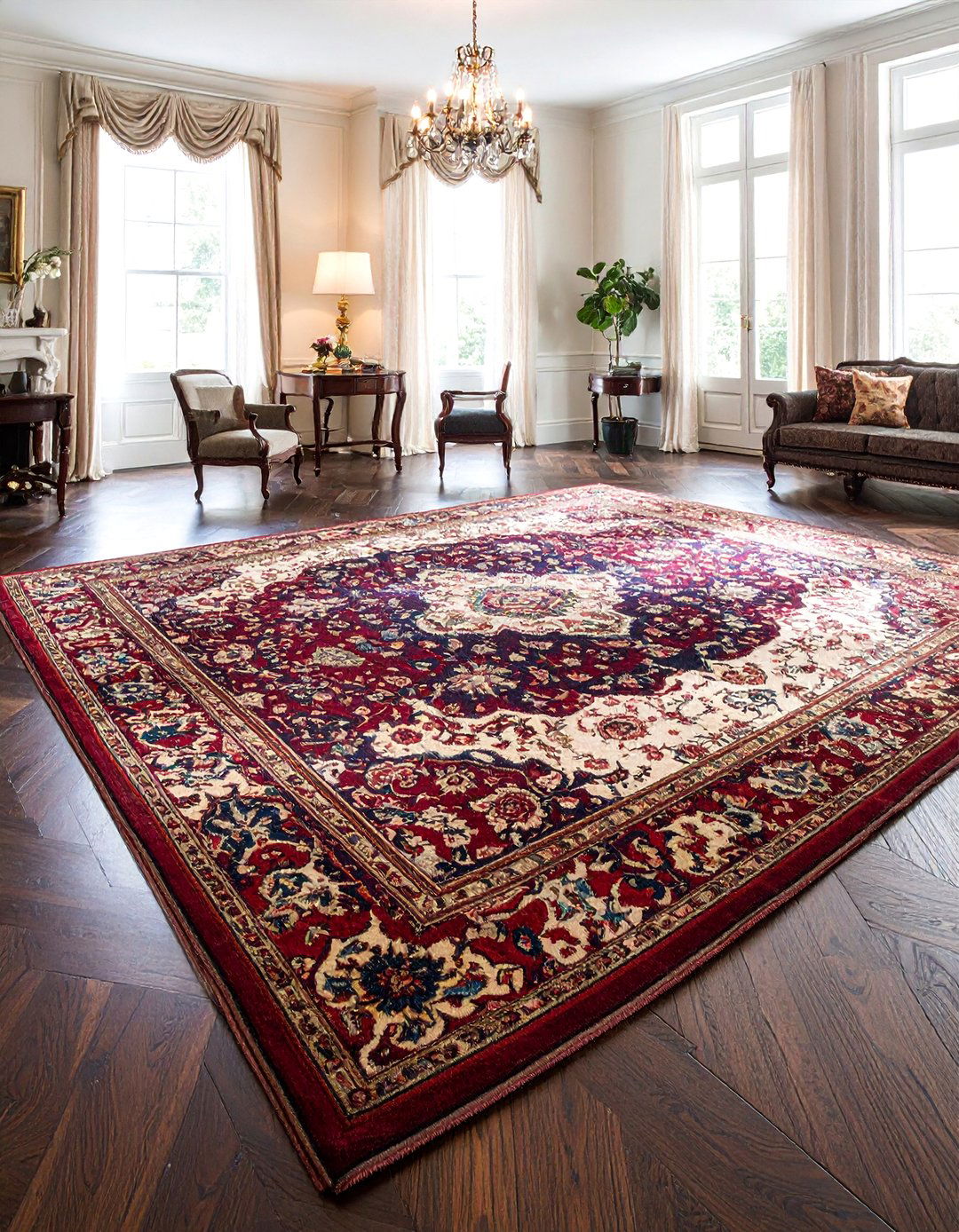
Oriental rugs were highly prized in Victorian homes, valued for their intricate patterns, rich colors, and superb craftsmanship. These rugs, imported from regions like Persia, Turkey, and Central Asia, were a symbol of wealth and worldliness. They served as the perfect anchor for furniture groupings in a living room or added warmth and luxury to a bedroom or dining room. The complex floral and geometric motifs and the deep color palettes of reds, blues, and golds complement the dark wood furniture and ornate details typical of the era. Layering a vibrant Oriental rug over polished wood floors adds instant character, texture, and historical depth.
24. Victorian Interior with Gaslight-Style Wall Sconces
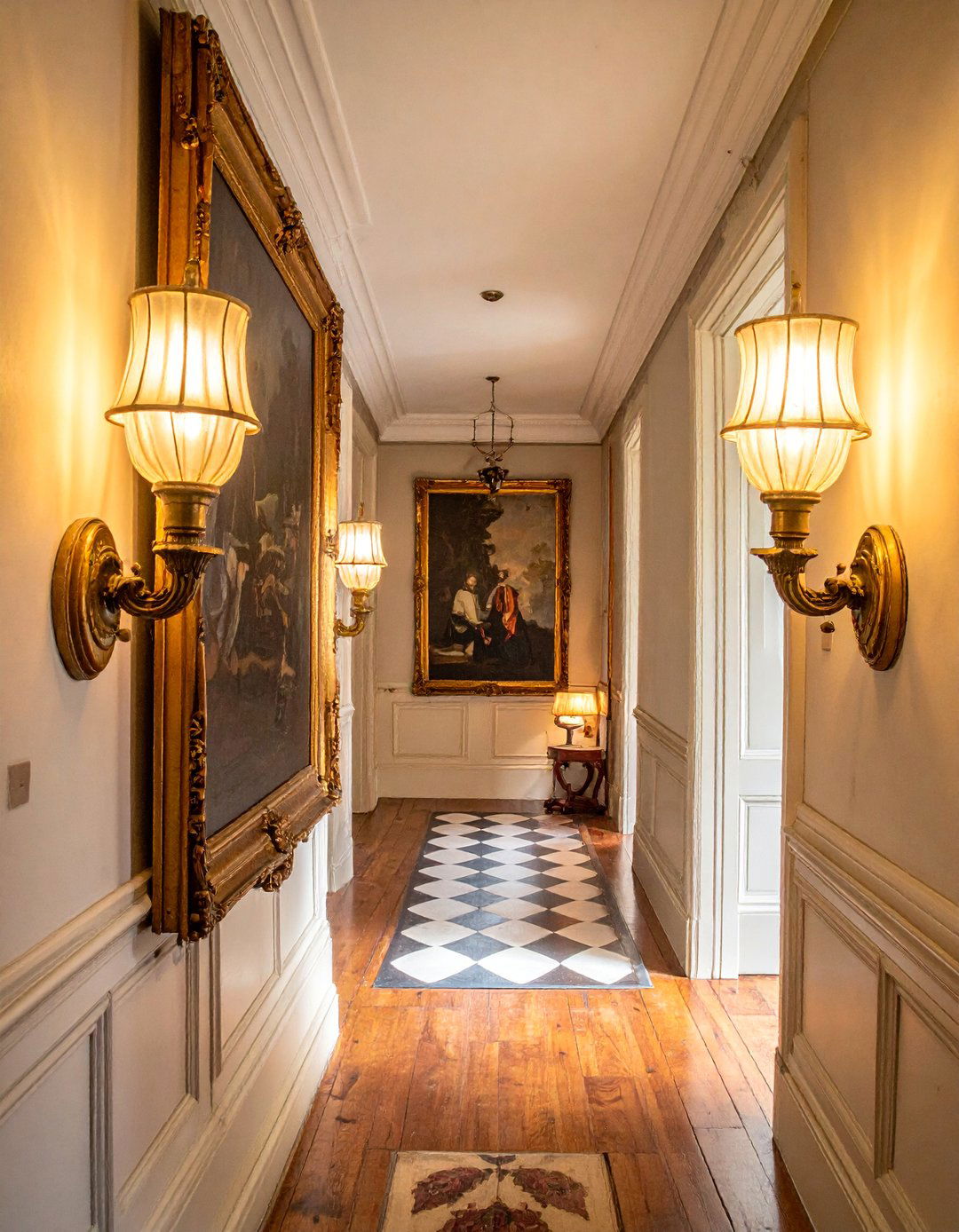
Before the widespread adoption of electricity, gas lighting was common in Victorian homes. Replicating this look with modern, gaslight-style wall sconces can add a wonderful layer of ambient and historical charm. These fixtures often feature ornate metalwork in brass or bronze, with glass shades that are typically fluted, etched, or globe-shaped. Install them in pairs to flank a fireplace, a large mirror, or a doorway in a hallway or living room. When fitted with warm, low-wattage bulbs, they cast a soft, inviting glow that mimics the gentle flicker of old gas flames, creating an authentic and cozy atmosphere.
25. Victorian Interior with a Conservatory Garden Room
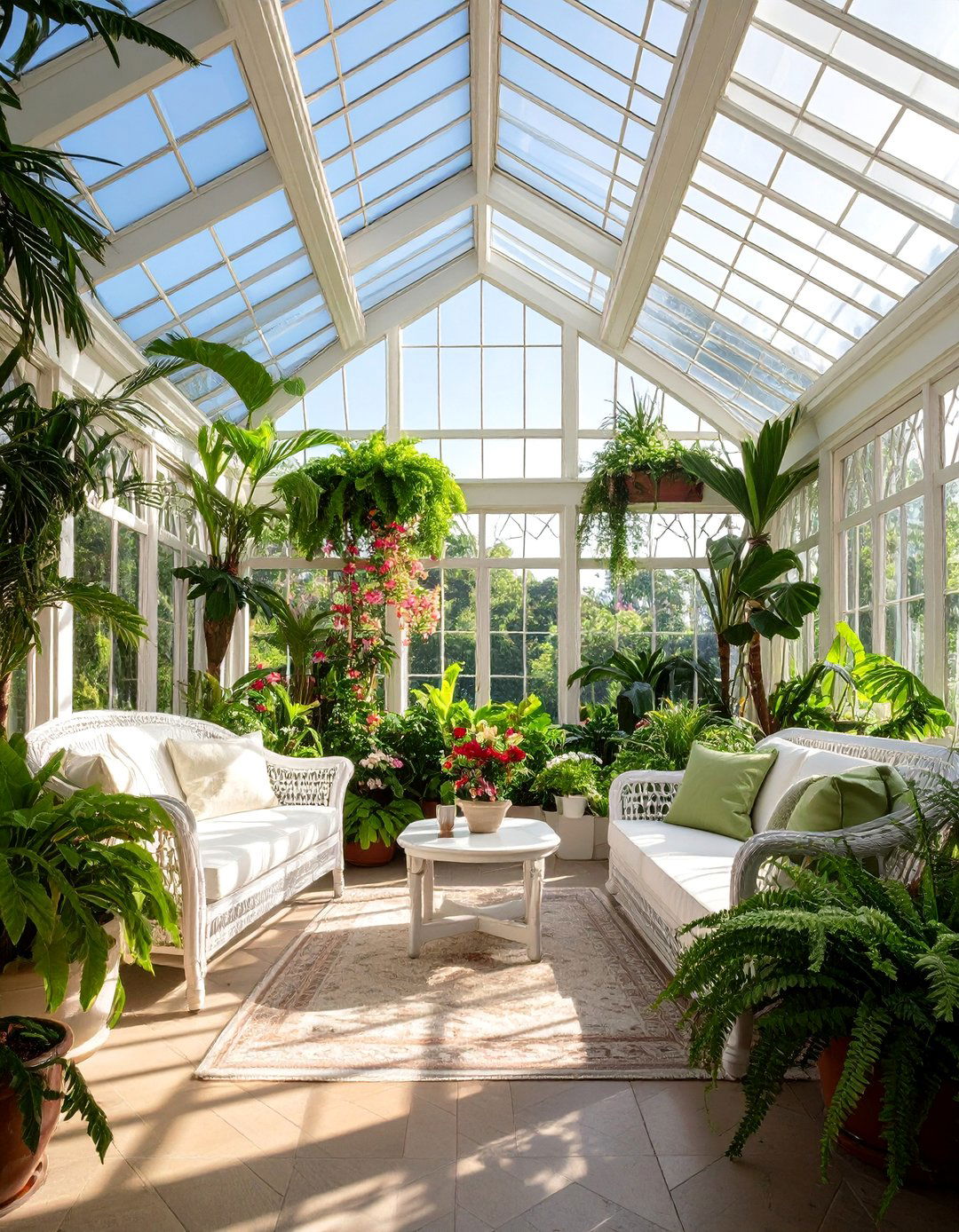
A conservatory, or "winter garden," was a beloved feature of affluent Victorian homes, allowing residents to cultivate exotic plants year-round. These structures, made of glass and cast iron, were filled with light and lush greenery. You can create a similar feeling by dedicating a sun-drenched room to this purpose. Fill the space with an abundance of potted plants, especially ferns, palms, and orchids, which were Victorian favorites. Use wrought-iron or wicker furniture and decorative tile flooring to complete the look. This creates a tranquil, verdant escape that connects the opulent interior with the beauty of the natural world, celebrating the era’s passion for horticulture.
Conclusion:
Embracing Victorian interior design is about celebrating ornate detail, rich materials, and historical depth. From the architectural grandeur of crown moldings and stained glass to the luxurious comfort of velvet upholstery and four-poster beds, each element contributes to a layered, personal, and timeless aesthetic. By thoughtfully incorporating features like decorative tiles, botanical prints, and dramatic lighting, you can create a home that honors the elegance of the past while remaining perfectly suited for contemporary life. The key is to balance opulence with functionality, resulting in a space that is both visually stunning and deeply inviting.

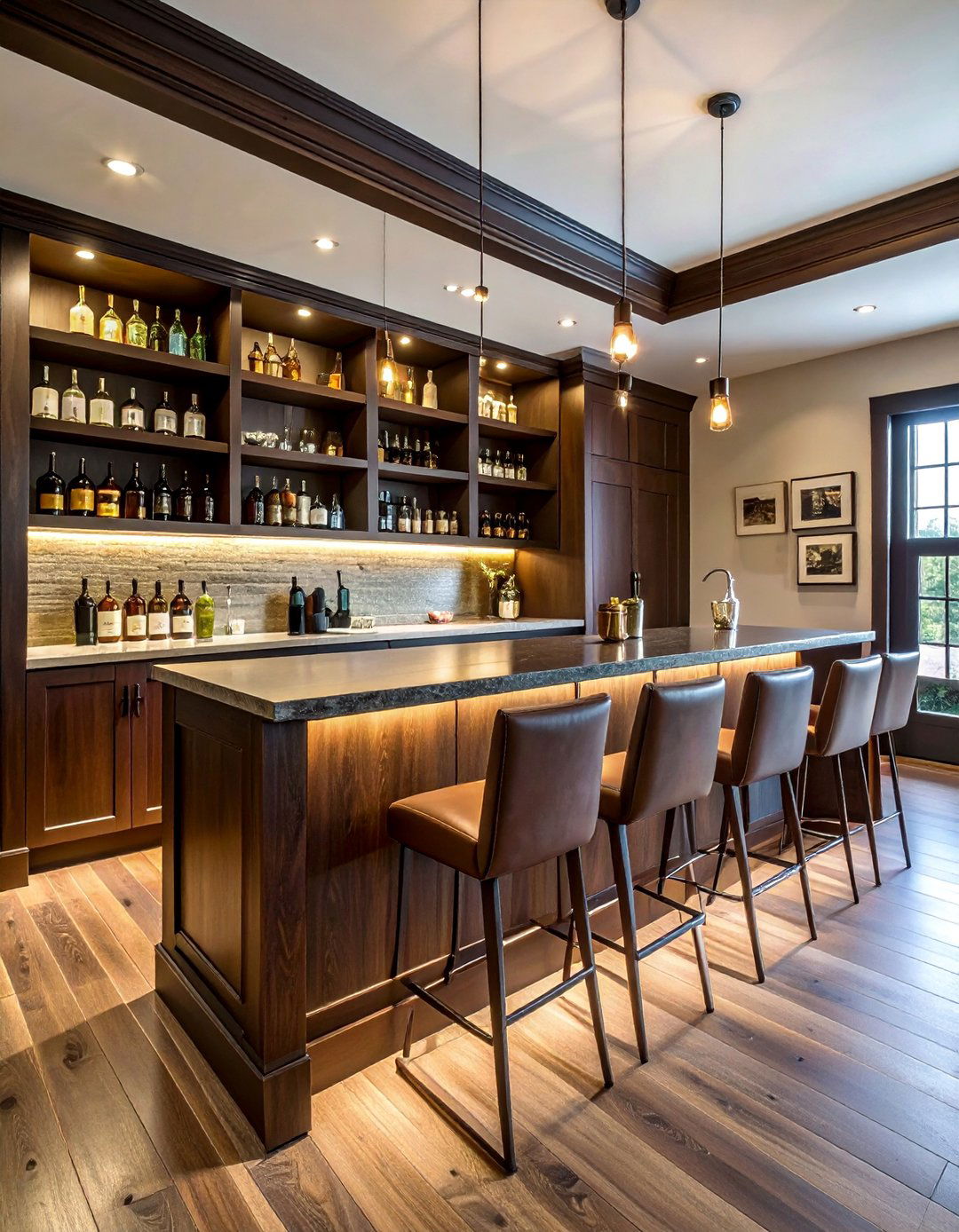
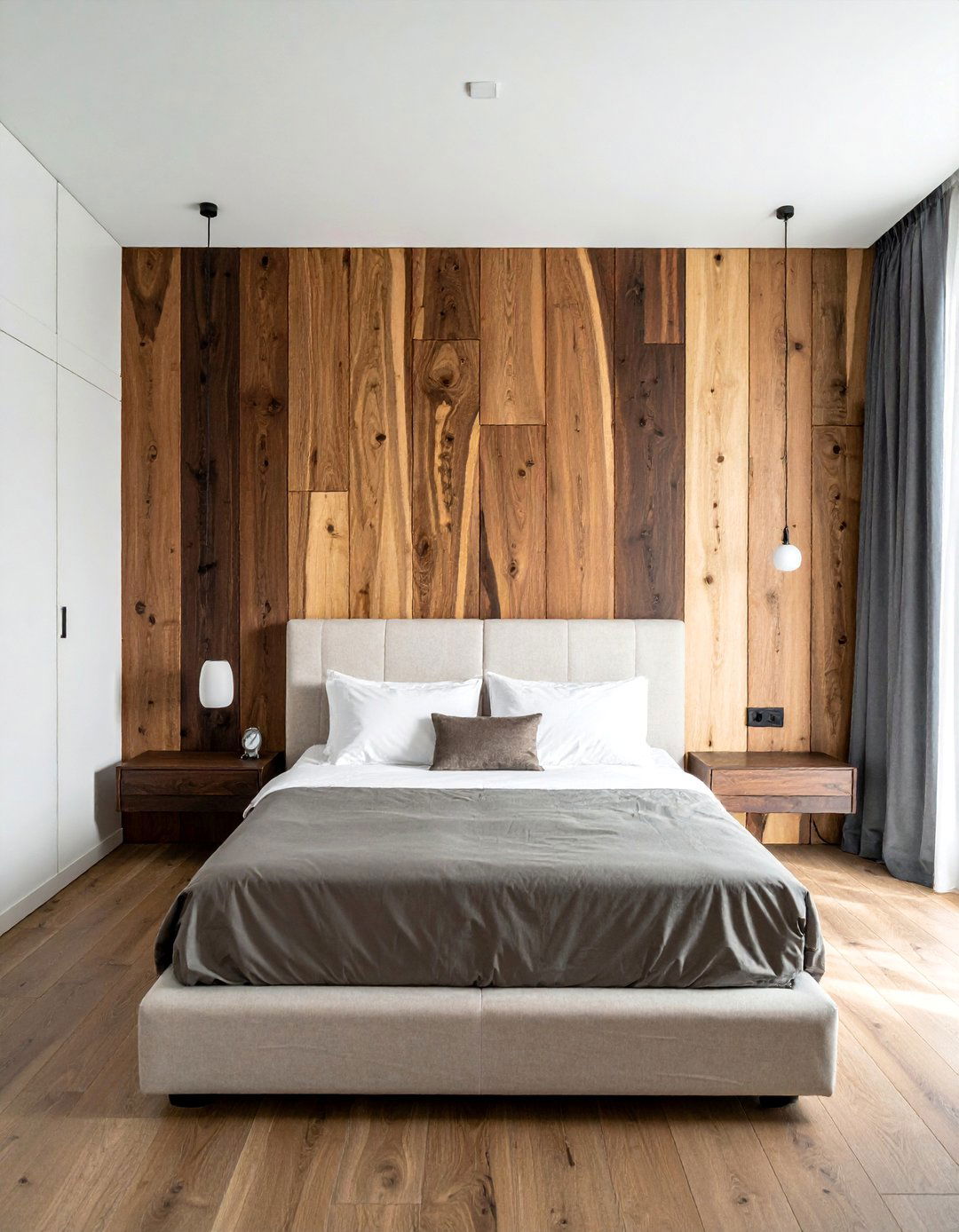
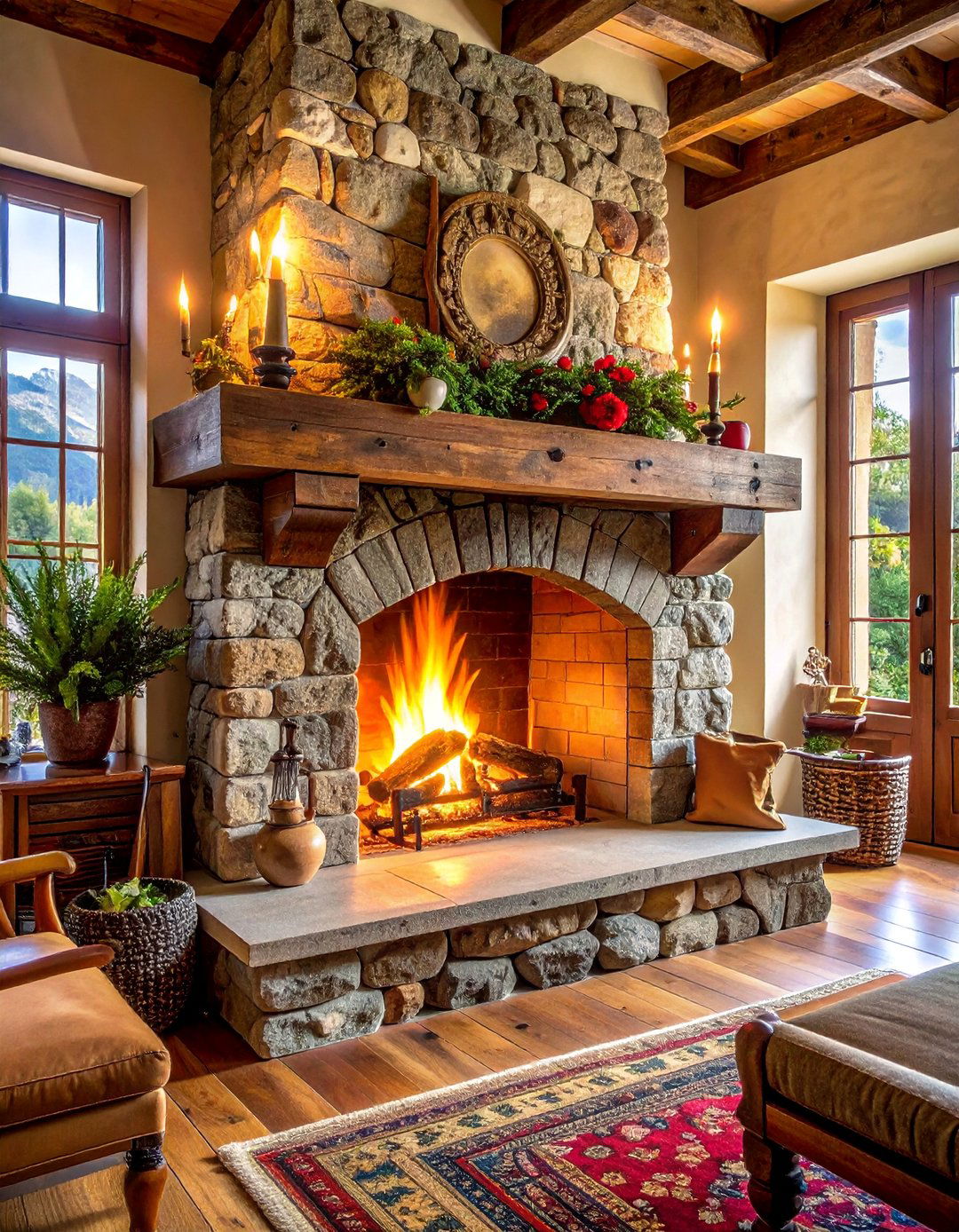
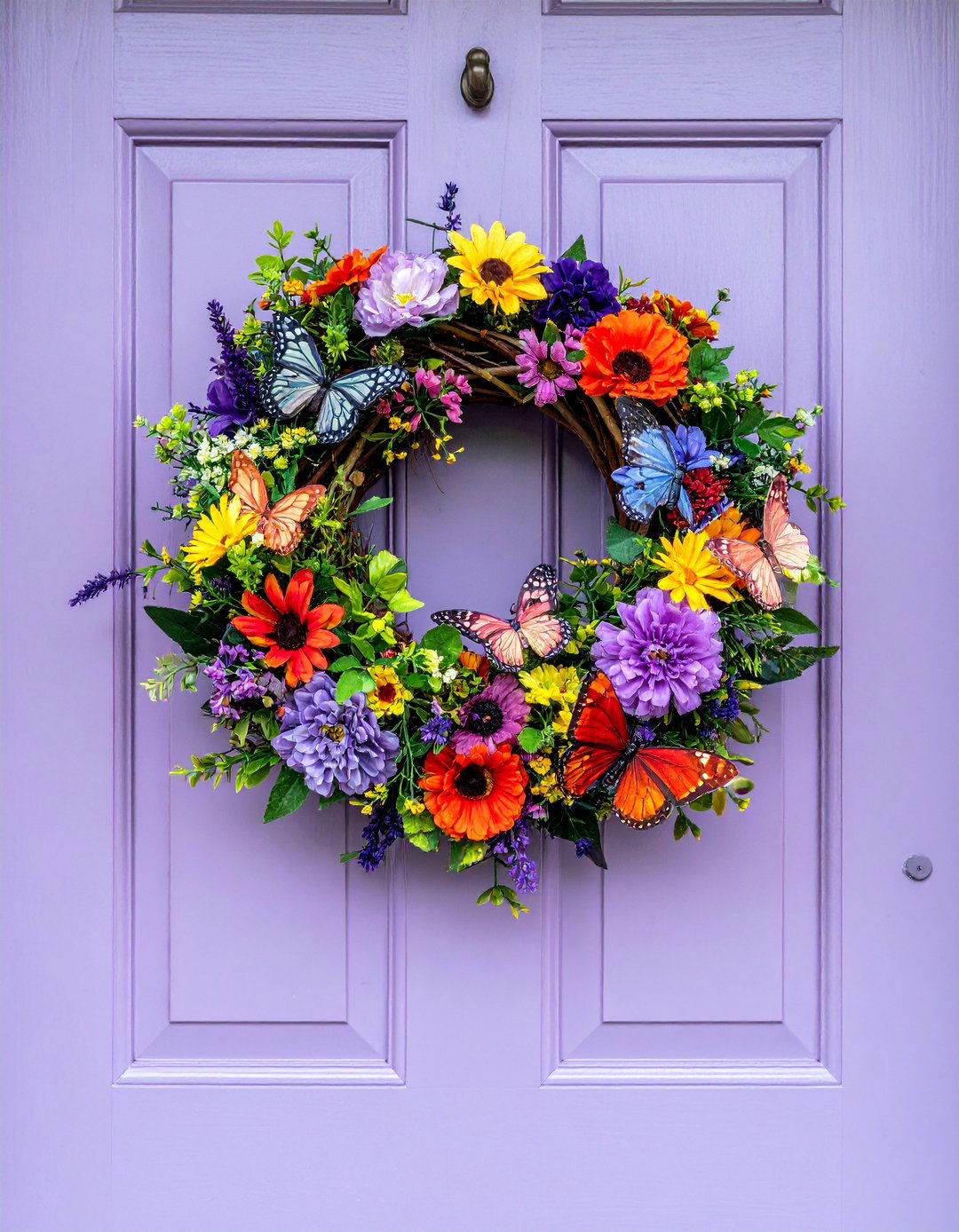
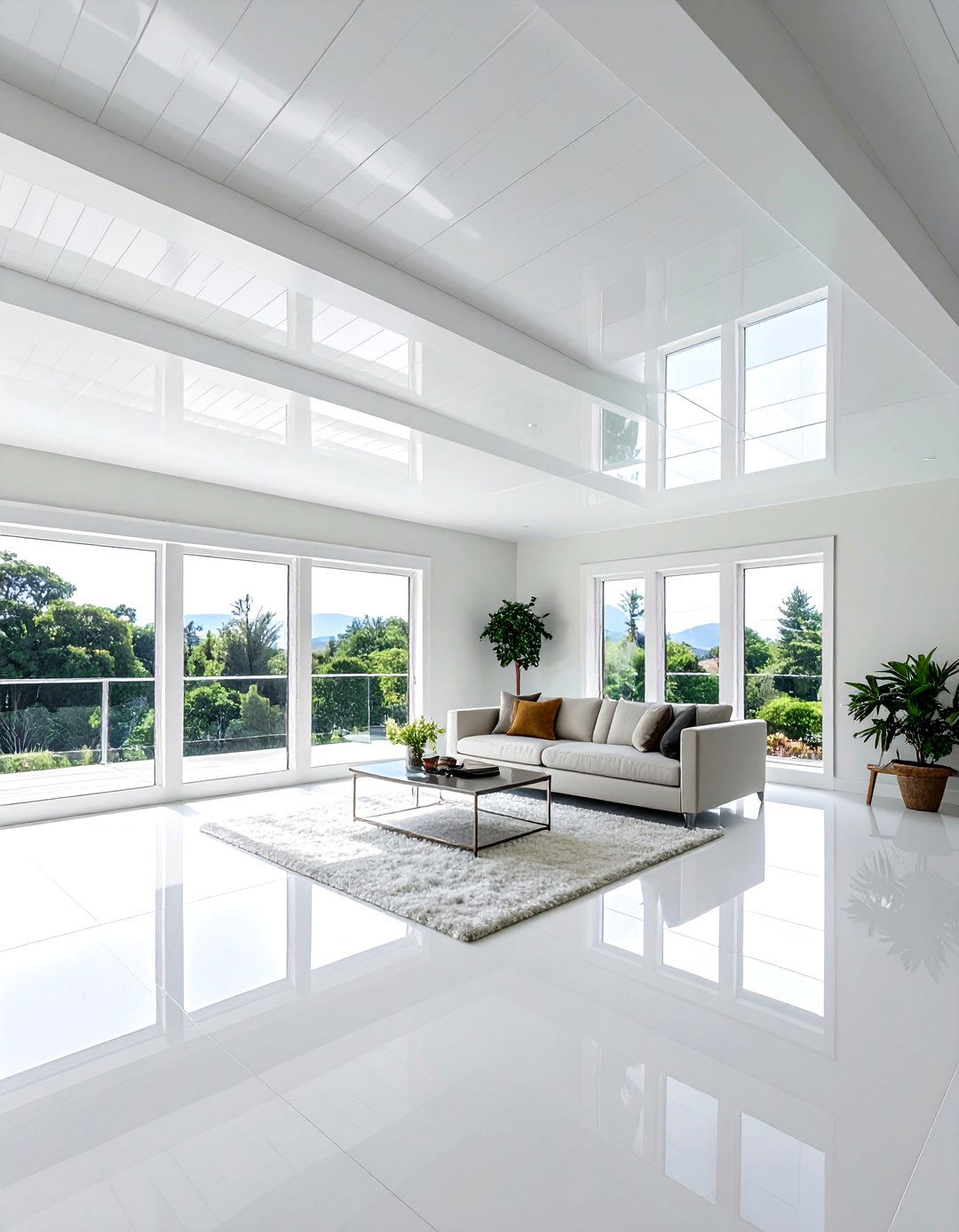
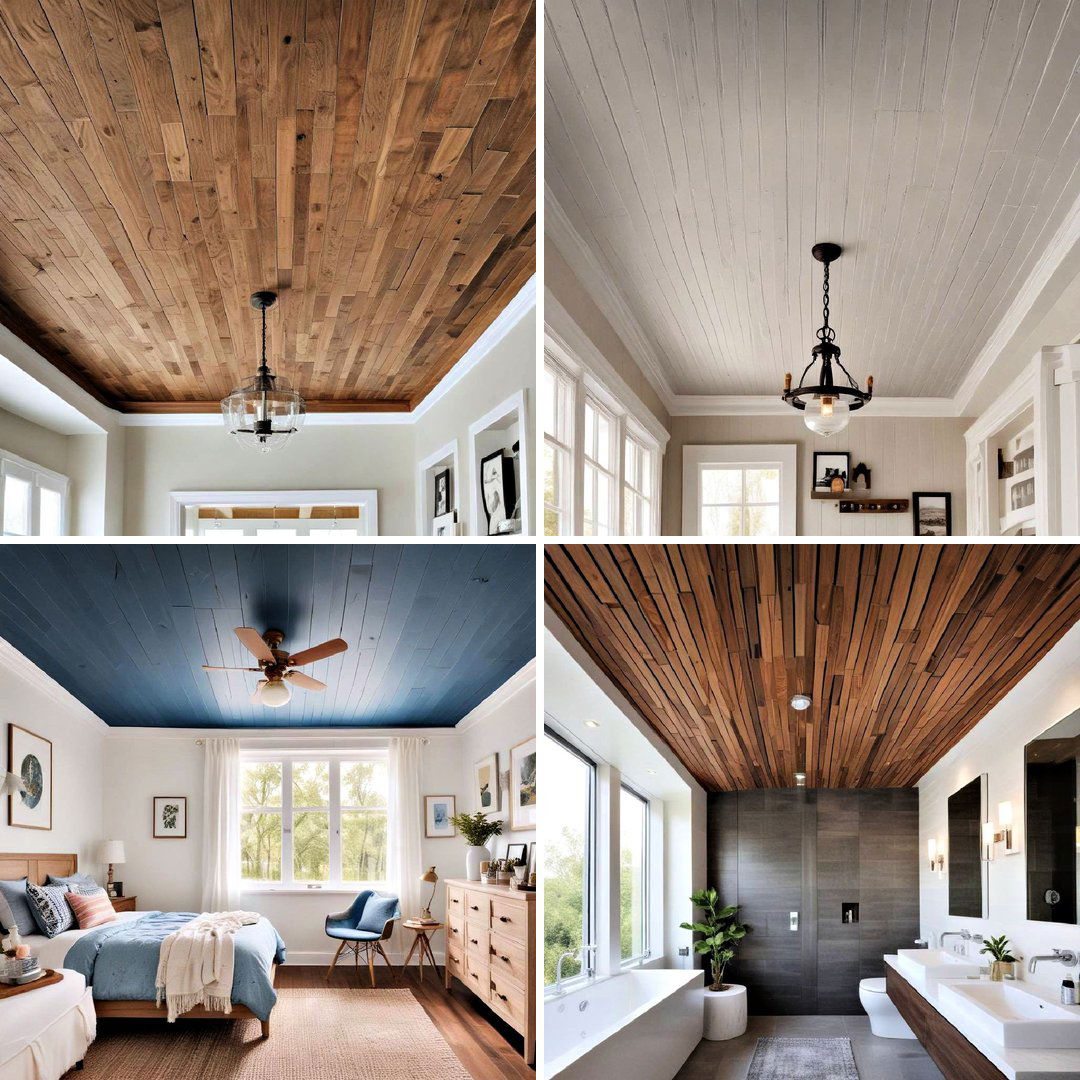
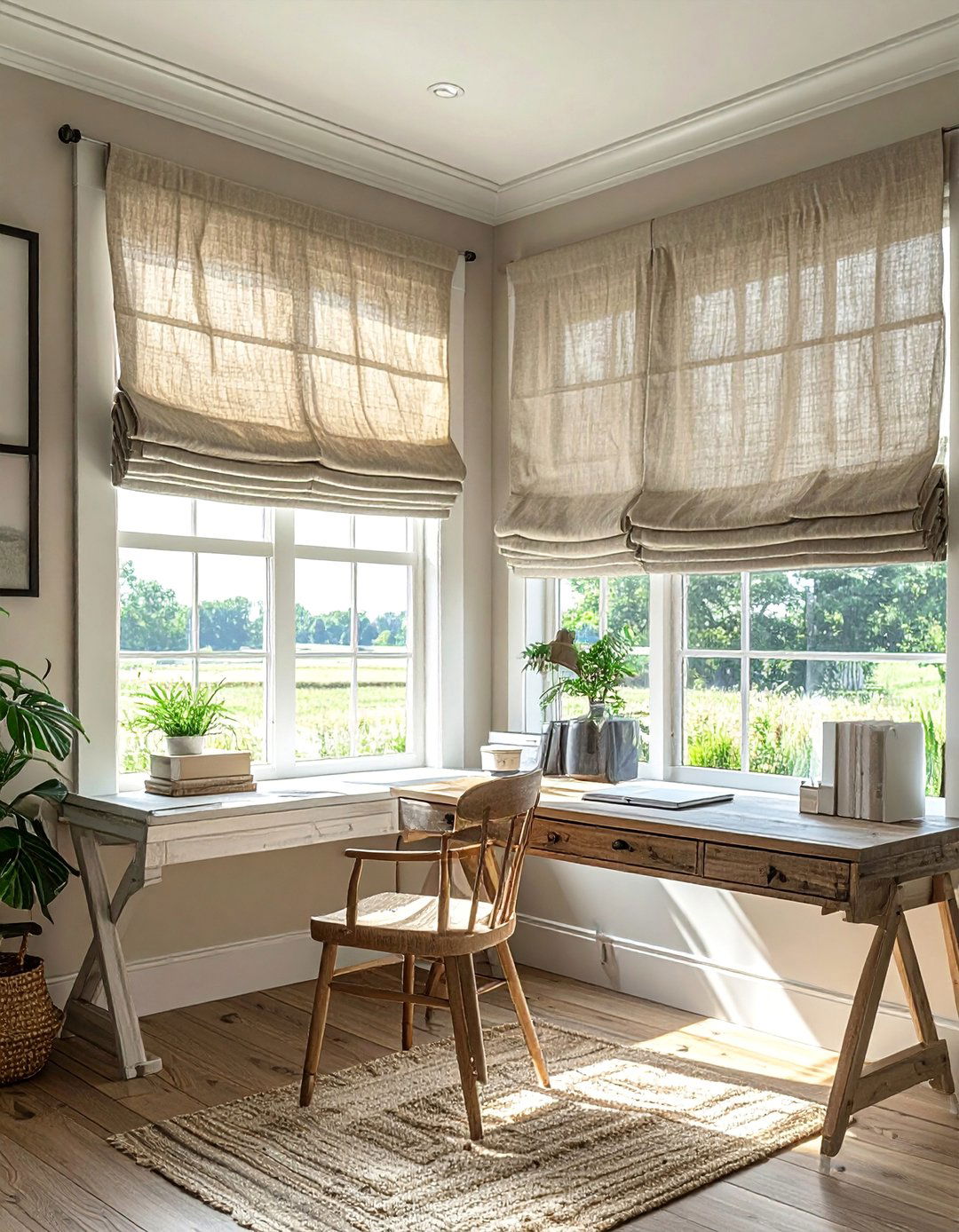
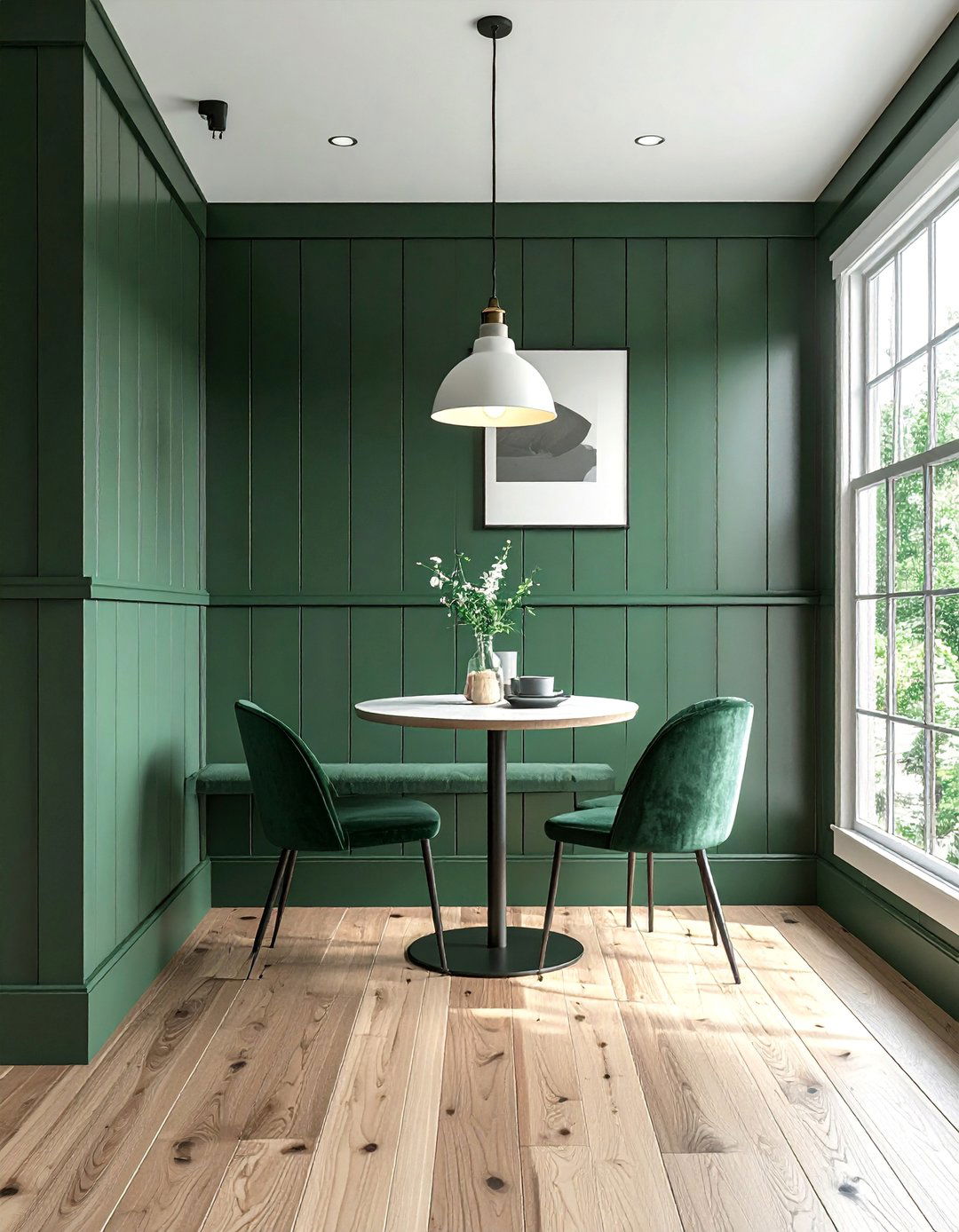
Leave a Reply